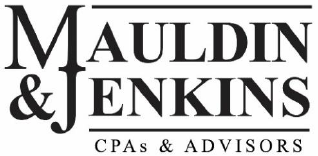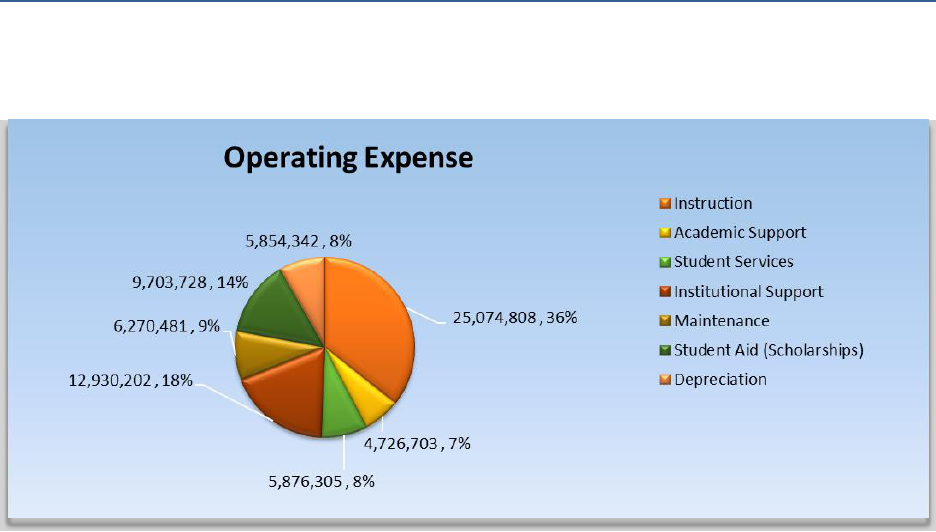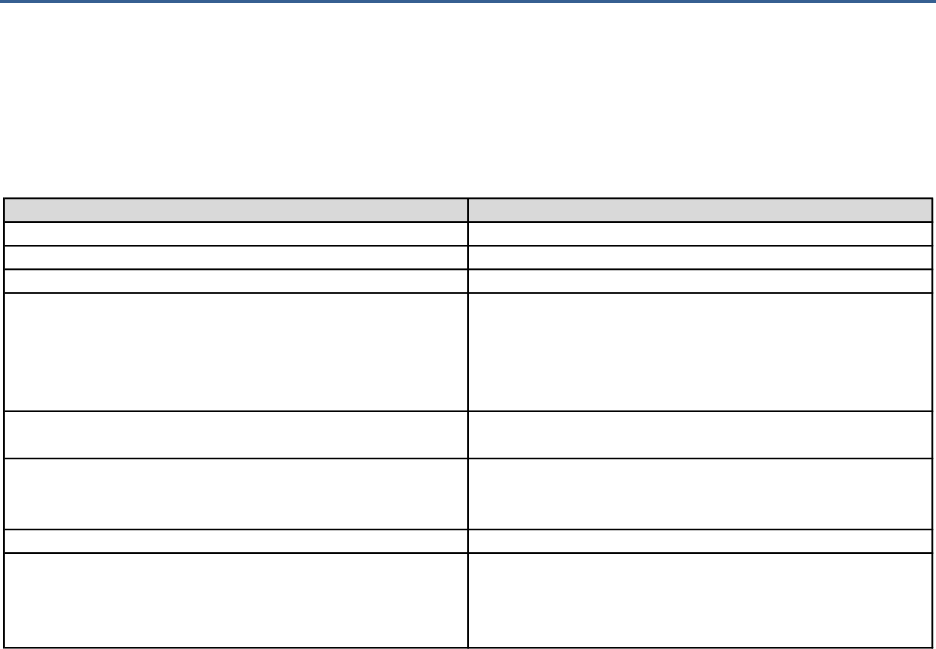John C. Calhoun Community College
Financial Statements
September 30, 2022

Snead State Community College
Table of Contents
September 30, 2022
PART I FINANCIAL STATEMENTS ....................................................................................... PAGE
Independent Auditor’s Report ..................................................................................................... 1
Management’s Discussion and Analysis ..................................................................................... 4
Statement of Net Position ............................................................................................................ 13
Statement of Financial Position – Discretely Presented Component Unit .................................. 15
Statement of Revenues, Expenses and Changes in Net Position ................................................. 16
Statement of Activities – Discretely Presented Component Unit ................................................ 17
Statement of Cash Flows ............................................................................................................. 18
Notes to the Financial Statements ............................................................................................... 20
Required Supplementary Information
Schedule of Proportionate Share of the Net Pension Liability ................................................. 54
Schedule of Pension Contributions .......................................................................................... 55
Schedule of Proportionate Share of the Net OPEB Liability ................................................... 56
Schedule of OPEB Contributions ............................................................................................. 57
Notes to Required Supplementary Information ....................................................................... 58
Listing of College Officials ...................................................................................................... 60
PART II REPORTS ON COMPLIANCE AND INTERNAL CONTROL
Independent Auditor’s Report on Internal Control over Financial Reporting and on
Compliance and Other Matters Based on an Audit of Financial Statements
Performed in Accordance with Government Auditing Standards. ............................................ 61
Independent Auditor’s Report on Compliance for Each Major Program and on
Internal Control Over Compliance Required by the Uniform Guidance .................................. 63
PART III SCHEDULES OF EXPENDITURES OF FEDERAL AWARDS
Schedule of Expenditures of Federal Awards
Year Ended September 30, 2022 .............................................................................................. 66
Notes to the Schedule of Expenditures of Federal Awards ......................................................... 69
PART IV SCHEDULES OF FINDINGS AND QUESTIONED COSTS
Section I – Summary of Auditor’s Results .................................................................................. 70
Section II – Financial Statement Findings ................................................................................... 70
Section III – Federal Award Findings and Questioned Costs
Year Ended September 30, 2022 ........................................................................ 70
Schedule of Prior Year Findings and Questioned Costs .............................................................. 71

PART I
FINANCIAL STATEMENTS

213 SOUTH HOUSTON STREET • ATHENS, AL 35611 • 256-232-2260 • 855-891-0070 • FAX 256-232-1881• www.mjcpa.com
Members of The American Institute of Certified Public Accountants
Independent Auditor’s Report
Jimmy Baker, Chancellor – Alabama Community College System
Dr. Jimmy Hodges, President – John C. Calhoun Community College
Opinion
We have audited the accompanying financial statements of John C. Calhoun Community College
(the “College”), a component unit of the State of Alabama, and its discretely presented
component unit, Calhoun College Foundation, Inc. (“the Foundation”), as of and for the year
ended September 30, 2022, and the related notes to the financial statements, which collectively
comprise the College’s basic financial statements, as listed in the table of contents.
In our opinion, based on our audit and the report of the other auditors, the financial statements
referred to above present fairly, in all material respects, the financial position of the College as of
September 30, 2022, and the changes in financial position and cash flows thereof, for the year then
ended in accordance with accounting principles generally accepted in the United States of
America.
We did not audit the financial statements of the Foundation, which represent 100% of the assets,
net position, and revenues of the discretely presented component unit as of June 30, 2022. Those
statements were audited by other auditors whose report has been furnished to us, and our opinion,
insofar as it relates to the amounts included for Calhoun College Foundation, Inc., is based solely
on the report of the other auditors.
Basis for Opinions
We conducted our audit in accordance with auditing standards generally accepted in the United
States of America (GAAS) and the standards applicable to financial audits contained in
Government Auditing Standards,
issued by the Comptroller General of the United States. Our
responsibilities under those standards are further described in the Auditor’s Responsibilities for
the Audit of the Financial Statements section of our report. The financial statements of the
Foundation were not audited in accordance with Government Auditing Standards. We are required
to be independent of the College and to meet our other ethical responsibilities, in accordance with
the relevant ethical requirements relating to our audit. We believe that the audit evidence we have
obtained is sufficient and appropriate to provide a basis for our audit opinions.
Change in Accounting Principle
As discussed in Note 1, the College implemented GASB 87 Leases during the year ended
September 30, 2022. Our opinion is not modified with respect to these matters.
Responsibilities of Management for the Financial Statements
Management is responsible for the preparation and fair presentation of the financial statements in
accordance with accounting principles generally accepted in the United States of America, and for
the design, implementation, and maintenance of internal control relevant to the preparation and
fair presentation of financial statements that are free from material misstatement, whether due to
fraud or error.
2
In preparing the financial statements, management is required to evaluate whether there are
conditions or events, considered in the aggregate, that raise substantial doubt about the College’s
ability to continue as a going concern for twelve months beyond the financial statement date,
including any currently known information that may raise substantial doubt shortly thereafter.
Auditor’s Responsibility for the Audit of the Financial Statements
Our objectives are to obtain reasonable assurance about whether the financial statements as a whole
are free from material misstatement, whether due to fraud or error, and to issue an auditor’s report
that includes our opinions. Reasonable assurance is a high level of assurance but is not absolute
assurance and therefore is not a guarantee that an audit conducted in accordance with GAAS and
Government Auditing Standards will always detect a material misstatement when it exists. The
risk of not detecting a material misstatement resulting from fraud is higher than for one resulting
from error, as fraud may involve collusion, forgery, intentional omissions, misrepresentations, or
the override of internal control. Misstatements are considered material if there is a substantial
likelihood that, individually or in the aggregate, they would influence the judgment made by a
reasonable user based on the financial statements.
In performing an audit in accordance with GAAS and Government Auditing Standards, we:
• Exercise professional judgment and maintain professional skepticism throughout the audit.
• Identify and assess the risks of material misstatement of the financial statements, whether
due to fraud or error, and design and perform audit procedures responsive to those risks. Such
procedures include examining, on a test basis, evidence regarding the amounts and disclosures
in the financial statements.
• Obtain an understanding of internal control relevant to the audit in order to design audit
procedures that are appropriate in the circumstances, but not for the purpose of expressing an
opinion on the effectiveness of the College’s internal control. Accordingly, no such opinion is
expressed.
• Evaluate the appropriateness of accounting policies used and the reasonableness of
significant accounting estimates made by management, as well as evaluate the overall
presentation of the financial statements.
• Conclude whether, in our judgment, there are conditions or events, considered in the
aggregate, that raise substantial doubt about the College’s ability to continue as a going concern
for a reasonable period of time.
We are required to communicate with those charged with governance regarding, among other
matters, the planned scope and timing of the audit, significant audit findings, and certain internal
control–related matters that we identified during the audit.
Required Supplementary Information
Accounting principles generally accepted in the United States of America require that the
management’s discussion and analysis, the schedule of proportionate share of the net pension
liability, the schedule of pension contributions, the schedule of proportionate share of the net
OPEB liability, and the schedule of OPEB contributions, as listed in the table of contents, be
presented to supplement the basic financial statements. Such information is the responsibility of
management and, although not a part of the basic financial statements, is required by the
Governmental Accounting Standards Board who considers it to be an essential part of financial
reporting for placing the basic financial statements in an appropriate operational, economic, or
historical context. We have applied certain limited procedures to the required supplementary
information in accordance with GAAS, which consisted of inquiries of management about the

3
methods of preparing the information and comparing the information for consistency with
management’s responses to our inquiries, the basic financial statements, and other knowledge we
obtained during our audit of the basic financial statements. We do not express an opinion or
provide any assurance on the information because the limited procedures do not provide us with
sufficient evidence to express an opinion or provide any assurance.
Supplementary Information
Our audit was conducted for the purpose of forming opinions on the financial statements that
collectively comprise the College’s basic financial statements. The schedule of expenditures of
federal awards as required by Title 2 U.S. Code of Federal Regulations (CFR) Part 200, Uniform
Administrative Requirements, Cost Principles, and Audit Requirements for Federal Awards is
presented for purposes of additional analysis and is not a required part of the basic financial
statements. Such information is the responsibility of management and was derived from and relates
directly to the underlying accounting and other records used to prepare the basic financial
statements. The information has been subjected to the auditing procedures applied in the audit of
the basic financial statements and certain additional procedures, including comparing and
reconciling such information directly to the underlying accounting and other records used to
prepare the basic financial statements or to the basic financial statements themselves, and other
additional procedures in accordance with GAAS. In our opinion, the schedule of expenditures of
federal awards is fairly stated, in all material respects, in relation to the basic financial statements
as a whole.
Other Information
Management is responsible for the other information included in the report. The other information
comprises the listing of College Officials, as listed in the table of contents, but does not include
the basic financial statements and our auditor’s report thereon. Our opinion on the basic financial
statements does not cover the other information, and we do not express an opinion or any form of
assurance thereon.
In connection with our audit of the basic financial statements, our responsibility is to read the other
information and consider whether a material inconsistency exists between the other information
and the basic financial statements, or the other information otherwise appears to be materially
misstated. If, based on the work performed, we conclude that an uncorrected material misstatement
of the other information exists, we are required to describe it in our report.
Other Reporting Required by Government Auditing Standards
In accordance with Government Auditing Standards, we have also issued our report dated January
17, 2023 on our consideration of the College’s internal control over financial reporting and on our
tests of its compliance with certain provisions of laws, regulations, contracts, and grant agreements
and other matters. The purpose of that report is solely to describe the scope of our testing of internal
control over financial reporting and compliance and the results of that testing, and not to provide
an opinion on the effectiveness of the College’s internal control over financial reporting or on
compliance. That report is an integral part of an audit performed in accordance with Government
Auditing Standards in considering the College’s internal control over financial reporting and
compliance.
Athens, AL
January 17, 2023

John C. Calhoun Community College
Management’s Discussion and Analysis
September 30, 2022
4
Overview of the Financial Statements and Financial Analysis
This section of John C. Calhoun Community College’s Annual Financial Report represents
management’s discussion and analysis of the College’s financial activity during the fiscal years
ended September 30, 2021, and September 30, 2022. There are three financial statements
presented: the Statement of Net Position; the Statement of Revenues, Expenses, and Changes in
Net Position; and the Statement of Cash Flows.
Statement of Net Position
The Statement of Net Position presents the assets, deferred outflow of resources, liabilities,
deferred inflow of resources, and net position of the College. The Statement of Net Position is a
point of time financial statement. The purpose of the Statement of Net Position is to present to
the readers of the financial statements a fiscal snapshot of John C. Calhoun Community College.
The Statement of Net Position presents end-of-year data concerning Assets (current and non-
current), Deferred Outflow of Resources, Liabilities (current and non-current), Deferred Inflow of
Resources, and Net Position (Assets and Deferred Outflow of Resources minus Liabilities and
Deferred Inflows of Resources). The difference between current and non-current assets will be
discussed in the financial statement disclosures.
From the data presented, readers of the Statement of Net Position are able to determine the
assets available to continue the operations of the institution. They are also able to determine
how much the institution owes vendors, investors, and lending institutions. Finally, the
Statement of Net Position provides a picture of the net position (assets minus liabilities) and their
availability for expenditure by the institution.
Net position is divided into three major categories. The first category, invested in capital assets,
net of debt, provides the institution’s equity in property, plant and equipment owned by the
institution. The next asset category is restricted net position, which is divided into two
categories, non-expendable and expendable. The corpus of non-expendable restricted resources
is only available for investment purposes. Expendable restricted net position is available for
expenditure by the institution but must be spent for purposes as determined by donors and/or
external entities that have placed time or purpose restrictions on the use of the assets. The final
category is unrestricted net position which is available to the institution for any appropriate
purpose of the institution.

John C. Calhoun Community College
Management’s Discussion and Analysis
September 30, 2022
5
This schedule is prepared from the College’s statement of net position which is presented on an accrual basis of
accounting whereby assets are capitalized and depreciated.
Assets
Current assets consist of cash and cash equivalents, short term investments, accounts receivable,
deposits with bond trustees, and other current assets. Total assets increased $10.7 million,
consisting of $2.5 million from current assets and $8.2 million from noncurrent assets. The
largest increase in assets was Building & Alterations, $14.49 million, mainly due to the completion
of the Huntsville Wall & Roof Project in 2022. The largest decrease in assets was $8.4 million in
Construction in Progress, again due to projects completing and transferring the capitalized
Building account. Another significant decrease in assets came from a reduced Deposit with
Trustee balance of $1.67 million, down from $3.5 million in the previous year. Overall accounts
receivable increased by $1.35 million, mainly due to a $1.7 million PSCA reimbursement due at
year end for construction related costs for the Alabama Center for the Arts Student Housing.
Investment securities of $4.7 million were purchased in the fiscal year 2022 due to improved
interest rate returns compared to the previous year.
Statement of Net Position (thousands of dollars)
Increase Percent
2022 2021 (Decrease) Change
Assets:
Current Assets 72,559$ 70,046$ 2,513$ 3.59%
Noncurrent Assets, Net 127,392 119,181 8,211 6.89%
Total Assets 199,951 189,227 10,724 5.67%
Deferred Outflow of Resources 17,431 20,665 (3,234) -15.65%
Liabilities:
Current Liabilities 19,134 19,345 (211) -1.09%
Noncurrent Liabilities 70,847 89,379 (18,532) -20.73%
Total Liabilities 89,981 108,724 (18,743) -17.24%
Deferred Inflow of Resources 23,522 13,179 10,343 78.48%
Net Position:
Net Invested in Capital Assets 99,783 101,922 (2,139) -2.10%
Restricted 6,508 1,360 5,148 378.53%
Unrestricted (2,412) (15,293) 12,881 -84.23%
Total Net Position 103,879$ 87,989$ 15,890$ 18.06%

John C. Calhoun Community College
Management’s Discussion and Analysis
September 30, 2022
6
Deferred Outflows of Resources
Deferred outflows of resources are defined as a consumption of assets by the government that
is applicable to a future reporting period. The $3.2 million decrease in Deferred Outflow of
Resources is due to a decrease in both pensions ($1.67 million) and other post-employment
benefits ($1.4 million), along with a decrease from a loss on bond refunding of $140,554. The
decrease in deferred outflows related to pensions and other post-employment benefits are due
to the change in values during the 2020-2021 fiscal year. This deferred outflow of resources
represents the portion of the pension liability already paid by Calhoun for the fiscal year 2021-
2022. The deferred outflows of resources related to OPEB resulting from College contributions
subsequent to the measurement date will be recognized as a decrease of the net OPEB liability
in the year ended September 30, 2023.
Current Liabilities
Current liabilities consist of deposits, accounts payable, unearned revenue, the current portion
of compensated absences, the current portion of long-term liabilities, and other current
liabilities. Current liabilities decreased by $210,543.
Noncurrent Liabilities
Noncurrent liabilities consist of principal amounts due on bonds, notes, and leases, unfunded
pensions, and the noncurrent portion of compensated absences. Noncurrent liabilities decreased
by $18.5 million due mainly to a $3.7 million decrease in Bonds Payable, a $11.2 million decrease
in Net Pension Liability, and a $3.56 million decrease in Net OPEB Liability. The net OPEB liability,
required by GASB 75, was measured as of September 30, 2021 and the total OPEB liability used
to calculate the net OPEB liability was determined by an actuarial valuation as of September 30,
2020. The College’s proportion of the net OPEB liability was based on a projection of the College’s
long-term share of contributions to the OPEB plan relative to the projected contributions of all
participating employers, actuarially determined. The net pension liability decrease of $11.2
million was required by GASB 68.
Deferred Inflows of Resources
Deferred inflows of resources are defined as an acquisition of assets by the government that is
applicable to a future reporting period. The Deferred Inflow of Resources increased by $10.3
million due to a $9.5 million increase in pensions and a $801,067 increase in post-employment
benefits. Pension related assets and liabilities are based on the annual actuarial valuation which
may fluctuate significantly for such factors as changes in plan experience or changes in economic
or demographic assumptions.
Net Position
Net position represents the residual value in the College’s assets after all liabilities are deducted.
Overall Net Position increased by $15.9 million due to several factors including a $8.67 million
addition in capital assets, a net decrease in Pension/OPEB liabilities of $4.5 million (including
deferred inflows) and $4.7 million increase in investment assets.

John C. Calhoun Community College
Management’s Discussion and Analysis
September 30, 2022
7
GASB 68 and 75 effects on the financial statements
The College adopted Governmental Accounting Standards Board (GASB) Statement Number 75,
Accounting and Financial Reporting for Postemployment Benefits Other Than Pensions, in the
fiscal year ending September 30, 2018. The provisions of this statement establish accounting
and financial standards for OPEB that are provided to the employees of state and local
governmental employers through OPEB plans that are administered through trusts. The adoption
of this statement has a significant impact on the College’s financial statements. This liability had
previously been reported in the Teacher’s Retirement System financial statements and not on
each participating institution’s statements. The establishment of this liability on the college’s
statements in 2018 had a negative impact on the total reported Net Position, mostly due to the
required $22.3 million restatement of net position and the associated recognition of liabilities,
deferred inflows and deferred outflows. Readers of the financial statements must understand
that this new reporting requirement does not change the college’s cash position, credit
worthiness, or overall financial health. The college’s financial ability to fund daily operations,
meet debt obligations, and allocate necessary resources to achieve stated goals and objectives
remains strong. GASB 75 simply shifts the reporting of this existing liability to each member
institution. The college’s annual expenditures allocated for pension expenses did not increase
due to GASB 75, nor did its future obligations for such. GASB 75 also did not change the college’s
excellent credit rating of A1 as reported by Moody’s Investor Services. More detailed information
regarding the calculation and reporting requirements of GASB 75 can be found in the Notes to
the Financial Statements.
The College adopted Governmental Accounting Standards Board (GASB) Statement Number 68,
Accounting and Financial Reporting for Pensions, in the fiscal year ending September 30, 2015.
This required reporting change also had a negative impact on the College’s net position. GASB
68 requires the recognition of future unfunded pension liabilities by each state and local
governments, which is similar to the GASB 75 requirement to recognize unfunded OPEB. This
liability had previously been reported in the Teacher’s Retirement System financial statements
and not on each participating institution’s statements. Readers of the financial statements must
understand that this reporting requirement does not change the college’s cash position, credit
worthiness, or overall financial health. The college’s financial ability to fund daily operations,
meet debt obligations, and allocate necessary resources to achieve stated goals and objectives
remains strong. The college’s annual expenditures allocated for pension expenses did not
increase due to GASB 68, nor did its future obligations for such. GASB 68 also did not change the
college’s excellent credit rating of A1 as reported by Moody’s Investor Services. More detailed
information regarding the calculation and reporting requirements of GASB 75 can be found in the
Notes to the Financial Statements.
Neither GASB 68 nor GASB 75 changed the college’s cash position, credit rating, or overall
financial health. If readers compared current financial statements to those prior to 2015, net
position is significantly different largely due to GASB 68 and 75 reporting requirements, not a
shift in the financial health of the college.

John C. Calhoun Community College
Management’s Discussion and Analysis
September 30, 2022
8
Statement of Revenues, Expenses and Changes in Net Position
Changes in total net position as presented on the Statement of Net Position are based on the
activity presented in the Statement of Revenues, Expenses, and Changes in Net Position. The
purpose of the statement is to present the revenues received by the institution, both operating
and non-operating, and the expenses paid by the institution, operating and non-operating, and
any other revenues, expenses, gains and losses received or spent by the institution.
Generally speaking operating revenues are received for providing goods and services to the
various customers and constituencies of the institution. Operating expenses are those expenses
paid to acquire or produce the goods and services provided in return for the operating revenues
and to carry out the mission of the institution. Non-operating revenues are revenues received
for which goods and services are not provided. For example, state appropriations are non-
operating because they are provided by the Legislature to the institution without the Legislature
directly receiving commensurate goods and services for those revenues.
Statement of Revenues, Expenses and Changes in Net Position (thousands of dollars)
Operating Revenues
Total Operating Revenue increased by $1.6million, largely due to a $1.97 million increase in State
grants. Student tuition of $19.8 million represents the largest type of operating revenue followed
by state grant revenue. Gross tuition revenue remained steady from the previous year, however
a larger portion of the tuition and fees was paid by financial aid sources which has to be listed as
an allowance and resulted in a decrease in net tuition of $742,133.
Increase Percent
2022 2021 (Decrease) Change
Operating Revenues 27,513$ 25,914$ 1,599$ 6.17%
Operating Expenses (70,437) (77,528) 7,091 -9.15%
Operating Loss (42,924) (51,614) 8,690 -16.84%
Non-Operating Revenues and Expenses
57,275 55,326 1,949 3.52%
Other Revenues 1,539 543 996 183.43%
Increase in Net Position 15,890 4,255 11,635 273.44%
Net Position at Beginning of Year 87,989 83,733 4,256 5.08%
Net Position at End of Year 103,879$ 87,988$ 15,891$ 18.06%

John C. Calhoun Community College
Management’s Discussion and Analysis
September 30, 2022
9
The below chart displays the operating revenues by type and their relationship with one another.
Some highlights of the information presented on the Statement of Revenues, Expenses, and
Changes in Net Position are the following:
Operating Expenses
Operating expenses decreased by $7 million,, largely due to a $5.97 million decrease in Student
Aid and Scholarships. This decrease was mainly due to $9.5 million CARES Act Student Stimulus
funds being awarded in fiscal year 2021, which inflated the 2021 amounts. Instruction, Academic
Support, Student Services, Institutional Support and Maintenance saw a combined decrease of
$806,749, mainly due to a $2.7 million decrease from last fiscal year in Pension and OPEB
expenses related to GASB 68 and GASB 75 required entries, netted with increases in personnel
costs related with cost of living raises near $1 million. Depreciation expense decreased by
$307,795 due to a reclassification of building alterations depreciation being recognized (25 years)
from buildings (50 years) in the previous fiscal year 2021 which inflated depreciation for that
year.

John C. Calhoun Community College
Management’s Discussion and Analysis
September 30, 2022
10
The operating expenses by function are displayed in the following exhibit.
Non-Operating Revenues
State Appropriations increased by $6.3 million from the previous year, with $3.3 million of that
increase allocated for the Alabama Center for the Arts facilities construction/renovations. Federal
grants decreased by $4.8 million mainly due to a decrease in CARES Act revenue of $4.2 million
compared to the previous year. Investment securities reported a net unrealized loss of $244,862
which is a reflection of the related bonds dropping in market value as of 9/30/2022.
Non-Operating Expenses
Total non-operating expenses decreased by $536,632 mainly due to a decrease in disposal of
assets.
Statement of Cash Flows
The final statement presented is the Statement of Cash Flows which presents detailed
information about the cash activity of the institution during the year. The statement is divided
into five parts. The first part deals with operating cash flows and shows the net cash used by the
operating activities of the institution. The second section reflects cash flows from non-operating
activities. This section reflects the cash received and spent for non-operating (state
appropriations plus federal grants and loans), non-investing, and non-capital purposes. The third
section reflects the cash flows from the purchase of capital buildings and equipment and any
borrowings (Bond Issues) used for the funding those capital purchases. The fourth section deals
with cash flows from investing activities. The fifth section summarizes any cash transactions that
would impact any prior year adjustments made during the current fiscal year.

John C. Calhoun Community College
Management’s Discussion and Analysis
September 30, 2022
11
Operating Activities
Cash used for operating activities of $40 million decreased by $.2 million mainly due to a decrease
of $5.97 million in scholarship expenses (due to higher CARES Act Student Stimulus payments in
fiscal year 2021), offset by increases in payments to suppliers, utilities and personnel. Actual cash
receipts for tuition decreased by $3 million, but Grants and Contracts increased by $3.1 million.
Non-operating Activities
Cash from non-operating activities decreased by $1 million mainly due to a $7 million decrease
in Federal Grants cash receipts, offset by an increase of $5.8 million in State Appropriations. Pell
cash receipts increased by $681,340, while Federal Loan cash receipts decreased $652,873.
Capital and related Financing Activities
Cash used for capital and related financing activities decreased by $6.2 million mostly due to a
net change in cash flow in Deposits with Trustees. Most of the construction funds for the
Huntsville Wall & Roof project were drawn down in fiscal year 2021 (over $7 million) and the
remaining ($1.8 million) were drawn down in this current fiscal year 2022.
Investing Activities
The $7.4 million decrease in cash flow from investing activities was due to a couple of key factors:
1) the maturity of securities during the fiscal year of $2.45 million and 2) almost $5 million
decrease due to Investments purchased compared to last fiscal year. The college is also
maintaining more of these funds in cash instead of reinvesting due to the possibility of needing
liquid funds in the near future for pending large scale capital projects that have yet to be finalized
in regard to cost and funding sources.
Increase Percent
2022 2021 (Decrease) Change
Cash Provided (Used) by
Operating Activities (40,275)$ (40,479)$ 204$ -0.50%
Non-Operating Activities 59,773 58,602 1,171 2.00%
Capital Activities (12,751) (6,539) (6,212) 95.00%
Investing Activities (4,897) 2,549 (7,446) -292.11%
Net Change in Cash 1,850 14,133 (12,283) -86.91%
Cash, Beginning of Year 61,246 47,112 14,134 30.00%
Cash, End of Year 63,096$ 61,245$ 1,851$ 3.02%

John C. Calhoun Community College
Management’s Discussion and Analysis
September 30, 2022
12
Economic Outlook
The college is not aware of any other currently known facts, decisions, or conditions that are
expected to have a significant effect on the financial position or results of operations during this
upcoming fiscal year.
Contacting John C. Calhoun Community College Financial Management
This financial report is designed to provide our stakeholders with a general overview of the
College's finances and to show the College's accountability for the money it receives. If you have
questions about this report or need additional financial information, contact the Calhoun
Community College Business and Finance Department located at 6250 US-31, Tanner, AL 35671.

John C. Calhoun Community College
Statement of Net Position
September 30, 2022
The accompanying notes are an integral part of these financial statements.
13
ASSETS
Current Assets
Cash and Cash Equivalents
$ 63,096,151
Short-Term Investments
1,202,975
Accounts Receivable, Net of Allowance for
Doubtful Accounts of $1,208,868
5,973,375
Inventories
17,086
Deposit with Bond Trustee
1,678,034
Other Current Assets
591,386
Total Current Assets
72,559,007
Non-Current Assets
Long-Term Investments
3,527,066
Capital Assets:
Land
4,431,544
Improvements Other Than Buildings
11,661,034
Buildings & Building Alterations
143,522,246
Equipment and Furniture
25,347,409
Library Holdings
1,419,591
Construction in Progress
2,760,462
Lease
239,653
Less: Accumulated Depreciation
(65,517,304)
Total Capital Assets, Net of Depreciation
123,864,635
Total Non-Current Assets
127,391,701
Total Assets
199,950,708
DEFERRED OUTFLOWS OF RESOURCES
Loss on Bond Refunding
93,703
Deferred Outflows of Resources Related to Pensions
10,163,000
Deferred Outflows of Resources Related to OPEB
7,174,894
Total Deferred Outflows of Resources
17,431,597

John C. Calhoun Community College
Statement of Net Position
September 30, 2022
The accompanying notes are an integral part of these financial statements.
14
LIABILITIES
Current Liabilities
Deposits
$ 22,074
Accounts Payable and Accrued Liabilities
7,634,321
Bond Surety Payable
29,388
Unearned Revenue
7,469,600
Compensated Absences
173,361
Lease Payable
80,029
Bonds Payable
3,725,239
Total Current Liabilities
19,134,012
Non-Current Liabilities
Compensated Absences
1,560,248
Lease Payable
94,964
Bonds Payable
20,275,189
Net Pension Liability
34,553,000
Net OPEB Liability
14,363,638
Total Non-Current Liabilities
70,847,039
Total Liabilities
89,981,051
DEFERRED INFLOWS OF RESOURCES
Deferred Inflows of Resources Related to Pensions
10,741,000
Deferred Inflows of Resources Related to OPEB
12,781,125
Total Deferred Inflow of Resources
23,522,125
NET POSITION
Net Position
Net Investment in Capital Assets
99,782,917
Restricted Expendable:
Capital Projects
3,380,000
Debt Service
1,533,388
Scholarships and Fellowships
861
Other
1,593,923
Unrestricted
(2,411,960)
Total Net Position
$ 103,879,129

Calhoun College Foundation
Statement of Financial Position – Discretely Presented Component Unit
June 30, 2022
The accompanying notes are an integral part of these financial statements.
15
ASSETS
Current Assets
Cash and Cash Equivalents
$ 192,354
Investments
12,923,359
Total Assets
$ 13,115,713
NET ASSETS
Without Donor Restrictions
$ 4,155,348
With Donor Restrictions
8,960,365
Total Liabilities and Net Assets
$ 13,115,713

John C. Calhoun Community College
Statement of Revenues, Expenses and Changes in Net Position
For the Year Ended September 30, 2022
The accompanying notes are an integral part of these financial statements.
16
OPERATING REVENUES
Student Tuition and Fees (Net of Scholarship Allowances of $9,811,762)
$ 19,799,439
Federal Grants and Contracts
1,794,077
State and Local Grants and Contracts
5,397,516
Sales and Services of Educational Activities
102,759
Auxiliary Enterprises:
Bookstore
327,845
Vending
41,826
Other Auxiliary Enterprises
1,017
Other
48,760
Total Operating Revenues
27,513,239
OPERATING EXPENSES
Instruction
25,074,808
Academic Support
4,726,703
Student Services
5,876,305
Institutional Support
12,930,202
Operation and Maintenance
6,270,481
Scholarships and Financial Aid
9,703,728
Depreciation
5,854,343
Auxiliary Enterprises
156
Total Operating Expenses
70,436,726
Operating Loss
(42,923,487)
NONOPERATING REVENUES (EXPENSES)
State Appropriations
36,853,690
Federal Grants
21,658,038
Investment Income
78,404
Unrealized Loss
(244,862)
Capital Grants, Contracts, and Gifts
1,705,529
Bond Surety Fee Expense
(155,856)
Other Nonoperating Expense
(223,787)
Interest on Debt
(857,225)
Net Nonoperating Revenues
58,813,931
Change in Net Position
15,890,444
Total Net Position - Beginning of Year
87,988,685
Total Net Position - End of Year
$ 103,879,129

Calhoun College Foundation
Statement of Activities – Discretely Presented Component unit
For the Year Ended June 30, 2022
The accompanying notes are an integral part of these financial statements.
17
Without
With
Donor
Donor
Restrictions
Restrictions
Total
Operating Activities
Revenue and Support:
Contributions
$ 37,679
$ 885,722
$ 923,401
Donated Goods, Services, and Facilities
338,357
-
338,357
Special Events Income
Less: Costs of Direct Benefit to Donors
-
108,031
108,031
Departments/Divisions Income
-
137,781
137,781
Investment Income, Net
(772,489)
(1,251,489)
(2,023,978)
Other Income
29,269
-
29,269
Net Assets Released from Restrictions
1,096,733
(1,096,733)
-
Total Support and Revenue
729,549
(1,216,688)
(487,139)
Expenses:
Program Services
1,443,748
-
1,443,748
General and Administrative
40,466
-
40,466
Fundraising
25,038
-
25,038
Total Expenses
1,509,252
-
1,509,252
Change in Net Assets
(779,703)
(1,216,688)
(1,996,391)
Net Assets at Beginning of Year
4,935,051
10,177,053
15,112,104
Net Assets at End of Year
$ 4,155,348
$ 8,960,365
$ 13,115,713

John C. Calhoun Community College
Statement of Cash Flows
For the Year Ended September 30, 2022
The accompanying notes are an integral part of these financial statements.
18
CASH FLOWS FROM OPERATING ACTIVITIES
Tuition and Fees
$ 19,765,100
Grants and Contracts
5,836,174
Payments to Suppliers
(14,312,571)
Payments for Utilities
(1,867,805)
Payments for Employees
(29,707,320)
Payments for Benefits
(10,844,546)
Payments for Scholarships
(9,666,643)
Sales and Service of Educational Services
102,759
Other Receipts (Payments)
48,760
Auxiliary Enterprises
370,688
Net Cash Used in Operating Activities
(40,275,404)
CASH FLOWS FROM NONCAPITAL FINANCING ACTIVITIES
State and Local Appropriations
36,853,690
Gifts and Grants for Other than Capital Purposes
1,705,529
Federal Grants
21,658,038
Federal Direct Loan Receipts
8,759,720
Federal Direct Loan Disbursements
(8,759,720)
Other Noncapital Financing
(444,303)
Net Cash Provided by Noncapital Financing Activities
59,772,954
CASH FLOWS FROM CAPITAL AND RELATED FINANCING ACTIVITIES
Capital Grants and Gifts Received
Purchase of Capital Assets and Construction
(10,628,756)
Principal Paid on Capital Debt and Leases
(3,592,239)
Interest Paid on Capital Debt and Leases
(716,671)
Deposits with Trustees
1,856,691
Proceeds from Sale of Assets
329,945
Net Cash Used in Capital and Related Financing Activities
(12,751,030)
CASH FLOWS FROM INVESTING ACTIVITIES
Investment Income
(166,458)
Purchase of Investments
(4,730,041)
Net Cash Used in Investing Activities
(4,896,499)
Net Increase in Cash and Cash Equivalents
1,850,021
Cash and Cash Equivalents - Beginning of Year
61,246,130
Cash and Cash Equivalents - End of Year
$ 63,096,151

John C. Calhoun Community College
Statement of Cash Flows
For the Year Ended September 30, 2022
The accompanying notes are an integral part of these financial statements.
19
Reconciliation of Net Operating Loss to Net
Cash Used in Operating Activities
Operating Loss
$ (42,923,487)
Adjustments to Reconcile Net Operating Loss to Net
Cash Used in Operating Activities
Depreciation Expense
5,854,343
Pension and OPEB Expense
(1,414,936)
Changes in Assets and Liabilities:
Receivables
(1,355,419)
Inventory
1,653
Other Assets
37,085
Accounts Payable and Accrued Liabilities
(440,304)
Unearned Revenue
(34,339)
Net Cash Used in Operating Activities
$ (40,275,404)
Noncash Investing, Capital, and Financing Activities:
The College recorded $239,653 in right-of-use lease assets during the year.

John C. Calhoun Community College
Notes to the Financial Statements
For the Year Ended September 30, 2022
20
NOTE 1 – SUMMARY OF SIGNIFICANT ACCOUNTING POLICIES
The financial statements of John C. Calhoun Community College (the “College” or “CCC”) are
prepared in accordance with accounting principles generally accepted in the United States of
America (GAAP). The Governmental Accounting Standards Board (GASB) is the accepted
standard-setting body for establishing governmental accounting and financial reporting principles.
The more significant accounting policies of John C. Calhoun Community College are described
below.
A. Reporting Entity
The College is a component unit of the State of Alabama. A component unit is a legally separate
organization for which the elected officials of the primary government are financially accountable.
The Governmental Accounting Standards Board (GASB) in Statement Number 14, “The Financial
Reporting Entity,” states that a primary government is financially accountable for a component unit
if it appoints a voting majority of an organization’s governing body and (1) it is able to impose its
will on that organization or (2) there is a potential for the organization to provide specific financial
benefits to, or impose specific financial burdens on, the primary government. In this case, the
primary government is the State of Alabama which through the Alabama Community College
System Board of Trustees governs the Alabama Community College System. The Alabama
Community College System through its Chancellor has the authority and responsibility for the
operation, management, supervision, and regulation of the College. In addition, the College
receives a substantial portion of its funding from the State of Alabama (potential to impose a
specific financial burden). Based on these criteria, the College is considered for financial reporting
purposes to be a component unit of the State of Alabama.
B. Component Units
Calhoun College Foundation (the “Foundation” or “CCF”) is a legally separate, tax-exempt
organization that is organized exclusively for charitable, scientific, and educational purposes for
the benefit of the College. Because of the significance of the relationship between the College and
the Foundation, the Foundation is considered a component unit of the College. Organizations that
are legally separate, tax-exempt entities and that meet all of the following criteria should be
discretely presented as component units. These criteria are:
• The economic resources received or held by the separate organization are entirely
or almost entirely for the direct benefit of the primary government, its component
units, or its constituents.
• The primary government, or its component units, is entitled to, or has the ability to
otherwise access, a majority of the economic resources received or held by the
separate organization.
• The economic resources received or held by an individual organization that the
specific primary government, or its component units, is entitled to, or has the ability
to otherwise access, are significant to that primary government.

John C. Calhoun Community College
Notes to the Financial Statements
For the Year Ended September 30, 2022
21
Although the College does not control the timing or amount of receipts from CCF, the majority of
resources, or income thereon that CCF holds and invests are restricted to the activities of the
College by the donors. Because these restricted resources held by CCF can only be used by, or for
the benefit of, the College, CCF is discretely presented as a component unit of the College. CCF is
reported in its original format on separate financial statements because of the difference in its
reporting model as further described below. Complete financial statements for CCF are available
from the Foundation’s director upon request.
The Foundation is a not-for-profit organization that reports its financial results under the Financial
Accounting Standard Board (FASB) Statements. Most significant to the Foundation’s operations
and reporting model is Accounting Standards Codification (ASC) 958, Not-for-Profit Entities. As
such, certain revenue recognition criteria and presentation features are different from GASB
revenue recognition criteria presentation features. No modifications have been made to the
Foundation’s financial information in the College’s financial reporting entity for these differences;
however, significant note disclosures (see Note 11) to the Foundation’s financial statements have
been incorporated into the College’s notes to the financial statements.
C. Measurement Focus, Basis of Accounting and Financial Statement Presentation
John C. Calhoun Community College follows all applicable GASB pronouncements. The financial
statements of John C. Calhoun Community College have been prepared using the economic
resources measurement focus and the accrual basis of accounting. Revenues are recorded when
earned and expenses are recorded when a liability is incurred, regardless of the timing of the related
cash flows. Grants and similar items are recognized as revenue as soon as all eligibility
requirements imposed by the provider have been met.
It is the policy of the College to first apply restricted resources when an expense is incurred and
then apply unrestricted resources when both restricted and unrestricted net position are available.
The Statement of Revenues, Expenses and Changes in Net Position distinguishes between
operating and non-operating revenues. Operating revenues, such as tuition and fees, result from
exchange transactions associated with the principal activities of the College. Exchange transactions
are those in which each party to the transactions receives or gives up essentially equal values. Non-
operating revenues arise from exchange transactions not associated with the College 's principal
activities, such as investment income and from all non-exchange transactions, such as state
appropriations.
D. Accounting Estimates
The preparation of financial statements in conformity with accounting principles generally
accepted in the United States of America requires management to make estimates and assumptions
that affect certain reported amounts and disclosures. Accordingly, actual results could differ from
those estimates.

John C. Calhoun Community College
Notes to the Financial Statements
For the Year Ended September 30, 2022
22
E. Assets, Deferred Outflows of Resources, Liabilities, Deferred Inflows of Resources and
Net Position
1. Cash, Cash Equivalents, and Investments
Cash and cash equivalents include cash on hand, demand deposits and short-term investments with
original maturities of three months or less from the date of acquisition.
Statutes authorize the College to invest in the same type of instruments as allowed by Alabama law
for domestic life insurance companies. This includes a wide range of investments, such as direct
obligations of the United States of America, obligations issued or guaranteed by certain federal
agencies, and bonds of any state, county, city, town, village, municipality, district or other political
subdivision of any state or any instrumentality or board thereof or of the United States of America
that meet specified criteria.
Investments are measured at fair value on a recurring basis. Recurring fair value measurements are
those that Governmental Accounting Standards Board (GASB) Statements require or permit in the
Statement of Net Position at the end of each reporting period.
2. Receivables
Accounts receivable relate to amounts due from students, federal grants, state grants, third party
tuition, and auxiliary enterprise sales, such as food service, bookstore, and residence halls. The
receivables are shown net of allowance for doubtful accounts.
3. Capital Assets
Capital assets, other than intangible assets, with a unit cost of over $5,000 and an estimated useful
life in excess of one year, and all library books, are recorded at historical cost or estimated historical
cost if purchased or constructed. The capitalization threshold for intangible assets such as
capitalized software and internally generated computer software is $1 million and $100,000 for
easements and land use rights and patents, trademarks, and copyrights. In addition, works of art
and historical treasures and similar assets are recorded at their historical cost. Donated capital assets
are recorded at fair market value at the date of donation. Land, construction in progress, and
intangible assets with indefinite lives are the only capital assets that are not depreciated.
Depreciation is not allocated to a functional expense category. The costs of normal maintenance
and repairs that do not add to the value of the asset or materially extend its life are not capitalized.
Major outlays for capital assets and improvements are capitalized as projects are constructed.
Maintenance and repairs are charged to operations when incurred. Betterments and major
improvements which significantly increase values, change capacities, or extend useful lives are
capitalized. Upon the sale or retirement of fixed assets being depreciated using the straight-line
method, the cost and related accumulated depreciation are removed from the respective accounts
and any resulting gain or loss is included in the results of operation.

John C. Calhoun Community College
Notes to the Financial Statements
For the Year Ended September 30, 2022
23
The method of depreciation and useful lives of the capital assets and right-to-use leased assets are
as follows:
Assets
Depreciation Method
Useful Lives
Buildings
Straight-Line
50 years
Building Alterations
Straight-Line
25 years
Improvements other than Buildings
Straight-Line
25 years
Equipment > $25,000
Straight-Line
10 years
Equipment < $25,000
Straight-Line
5 years
Right-to-Use Leased Equipment
Straight-Line
5-10 years
Library Materials
Composite
20 years
Capitalized Software
Straight-Line
10 years
Easement and Land Use Rights
Straight-Line
20 years
Patents, Trademarks, and Copyrights
Straight-Line
20 years
4. Deferred Outflow of Resources
Deferred outflows of resources are reported in the Statement of Net Position. Deferred outflows
of resources are defined as a consumption of assets by the government that is applicable to a
future reporting period. Deferred outflows of resources increase net position, similar to assets.
5. Long-Term Obligations
Long-term debt and other long-term obligations are reported as liabilities in the Statement of Net
Position. Bonds/Warrant premiums and discounts are deferred and amortized over the life of the
bonds. Bonds/Warrants payable are reported net of the applicable bond/warrant premium or
discount.
6. Compensated Absences
No liability is recorded for sick leave. Substantially all employees of the College earn 12 days of
sick leave each year with unlimited accumulation. Payment is not made to employees for unpaid
sick leave at termination or retirement.
All non-instructional employees earn annual leave at a rate which varies from 12 to 24 days per
year depending on duration of employment, with accumulation limited to 60 days. Instructional
employees do not earn annual leave. Payment is made to employees for unused leave at termination
or retirement.
7. Deferred Inflow of Resources
Deferred inflows of resources are reported in the Statement of Net Position. Deferred inflows of
resources are defined as an acquisition of assets by the government that is applicable to a future
reporting period. Deferred inflows of resources decrease net position, similar to liabilities.

John C. Calhoun Community College
Notes to the Financial Statements
For the Year Ended September 30, 2022
24
8. Unearned Revenue
Unearned revenue consists primarily of amounts received for fall student tuition and fees that are
not earned until the next fiscal year. Unearned revenue also includes amounts received from grant
and contract sponsors that have not yet been earned.
9. Pensions
The Teachers’ Retirement System of Alabama (“TRS” or “the Plan”) financial statements are
prepared using the economic resources measurement focus and accrual basis of accounting.
Contributions are recognized as revenues when earned, pursuant to plan requirements. Benefits and
refunds are recognized as revenues when due and payable in accordance with the terms of the plan.
Expenses are recognized when the corresponding liability is incurred, regardless of when the
payment is made. Investments are reported at fair value. Financial statements are prepared in
accordance with requirements of the Governmental Accounting Standards Board (GASB). Under
these requirements, the Plan is considered a component unit of the State of Alabama and is included
in the State’s Annual Comprehensive Financial Report.
10. Postemployment Benefits Other Than Pensions (OPEB)
The Alabama Retired Education Employees’ Health Care Trust (Trust) financial statements are
prepared by using the economic resources measurement focus and accrual basis of accounting. This
includes for purposes of measuring the net OPEB liability, deferred outflows of resources and
deferred inflows of resources related to OPEB, and OPEB expense, information about the fiduciary
net position of the Trust and additions to/deductions from the Trust’s fiduciary net position. Plan
member contributions are recognized in the period in which the contributions are due. Employer
contributions are recognized when due pursuant to plan requirements. Benefits are recognized
when due and payable in accordance with the terms of the plan. Subsequent events were evaluated
by management through the date the financial statements were issued.
11. Net Position
Net position is required to be classified for accounting and reporting purposes into the following
categories:
Net Investment in Capital Assets - Capital assets, including restricted capital assets, reduced by
accumulated depreciation and by outstanding principal balances of debt attributable to the
acquisition, construction, or improvement of those assets. Deferred outflows of resources and
deferred inflows of resources that are attributable to the acquisition, construction, or improvement
of those assets or related debt are also included in this component of net position. Any unspent
related debt proceeds or inflows of resources at year-end related to capital assets are not included
in this calculation.

John C. Calhoun Community College
Notes to the Financial Statements
For the Year Ended September 30, 2022
25
Restricted:
Nonexpendable - Net position subject to externally imposed stipulations that it be maintained
permanently by the College. Such assets would include permanent endowment funds.
Expendable - Net position whose use by the College is subject to externally imposed stipulations
that can be fulfilled by actions of the College pursuant to those stipulations or that expire by the
passage of time. These include funds held in federal loan programs.
Unrestricted - Net position is the net amount of the assets, deferred outflows of resources,
liabilities, and deferred inflows of resources that are not included in the determination of net
investment in capital assets or the restricted component of net position. Unrestricted resources may
be designated for specific purposes by action of management or the Alabama Community College
System Board of Trustees.
12. Federal Financial Assistance Programs
The College participates in various federal programs. Federal programs are audited in accordance
with the Title 2 U.S. Code of Federal Regulations Part 200, Uniform Administrative Requirements,
Cost Principles, and Audit Requirements for Federal Awards (Uniform Guidance).
13. Scholarship Allowances and Student Aid
Student tuition and fees are reported net of scholarship allowances and discounts. The amount for
scholarship allowances and discounts is the difference between the stated charge for goods and
services provided by the College and the amount that is paid by the student and/or third parties
making payments on behalf of the student. The College uses the alternate method as prescribed by
the National Association of College and College Business Officers (NACUBO) in their Advisory
Report (2000-05) to determine the amount of scholarship allowances and discounts.
14. Prepaid Expenses and Unearned Scholarships
Prepaid expenses are composed predominantly of prepaid insurance. Unearned scholarship expense
results from the Fall academic term spanning across the fiscal year end. The College prorates
scholarship expense to recognize only the amounts incurred in each fiscal year.
15. New Accounting Pronouncement
During the current Fiscal Year, the College implemented the following new accounting
pronouncements issued by the Governmental Accounting Standards Board (GASB):
- GASB Statement No. 87, Leases
- GASB Statement No. 89, Accounting for Interest Cost Incurred before the End of a
Construction Period
- GASB Statement No. 92, Omnibus 2020
- GASB Statement No. 93, Replacement of Interbank Offered Rates

John C. Calhoun Community College
Notes to the Financial Statements
For the Year Ended September 30, 2022
26
NOTE 2 – DEPOSITS AND INVESTMENTS
A. Deposits
The College's deposits in banks at year-end were held by financial institutions in the State of
Alabama's Security for Alabama Funds Enhancement (SAFE) Program. The SAFE Program was
established by the Alabama Legislature and is governed by the provisions contained in the Code of
Alabama 1975, Sections 41-14A-1 through 41-14A-14. Under the SAFE Program all public funds
are protected through a collateral pool administered by the Alabama State Treasurer's Office. Under
this program, financial institutions holding deposits of public funds must pledge securities as
collateral against those deposits. In the event of failure of a financial institution, securities pledged
by that financial institution would be liquidated by the State Treasurer to replace the public deposits
not covered by the Federal Deposit Insurance Corporation (FDIC).
If the securities pledged fail to produce adequate funds, every institution participating in the pool
would share the liability for the remaining balance.
The Statement of Net Position classification "cash and cash equivalents" includes all readily
available cash such as petty cash, demand deposits, and certificates of deposits with maturities of
three months or less.
B. Investments
The College invests its funds in securities and investments in accordance with the Code of Alabama
1975, Section 16-13-2, Sections 27-1-8 and 27-1-9, and Sections 27-41-1 through 27-41-41. These
laws provide that the College may invest in the same type of instruments as allowed by Alabama
law for domestic life insurance companies. This includes a wide range of investments, such as
direct obligations of the United States of America, obligations issued or guaranteed by certain
federal agencies, and bonds of any state, county, city, town, village, municipality, district or other
political subdivision of any state or any instrumentality or board thereof of the United States of
America that meet specified criteria. The College 's investment policy permits investments in the
following: 1) U.S. Treasury bills, notes, bonds, and stripped Treasuries; 2) U.S. Agency notes,
bonds, debentures, discount notes and certificates; 3) certificates of deposit (CDs), checking and
money market accounts of savings and loan associations, mutual savings banks, or commercial
banks whose accounts are insured by FDIC/FSLIC, and who are designated a Qualified Public
Depository (QPD) under the SAFE Program; 4) mortgage backed securities (MBSs); 5) mortgage-
related securities including collateralized mortgage obligations (CMOs) and real estate mortgage
investment conduits (REMIC) securities; 6) repurchase agreements; and 7) stocks and bonds which
have been donated to the institution.
The College’s portfolio shall consist primarily of bank CDs and interest-bearing accounts, U. S.
Treasury securities, debentures of a U. S. Government Sponsored Entity (GSE) and securities
backed by collateral issued by GSEs. In order to diversify the portfolio's exposure to concentration
risk, the portfolio's maximum allocation to specific product sectors is as follows: 1) U. S. Treasury
bills, notes and bonds can be held without limitation as to amount. Stripped Treasuries shall never
exceed 50 percent of the institution’s total investment portfolio. Maximum maturity of these

John C. Calhoun Community College
Notes to the Financial Statements
For the Year Ended September 30, 2022
27
securities shall be ten years. 2) U. S. Agency securities shall have limitations of 50 percent of the
College’s total investment portfolio for each Agency, with two exceptions: TVA and SLMA shall
be limited to ten percent of total investments. Maximum maturity of these securities shall be ten
years. 3) CDs with savings and loan associations, mutual savings banks, or commercial banks may
be held without limit provided the depository is a QPD under the SAFE Program. CD maturity
shall not exceed five years. 4) The aggregate total of all MBSs may not exceed 50 percent of the
institution's total investment portfolio. The aggregate average life maturity for all holdings of MBS
shall not exceed seven years, while the maximum average life maturity of any one security shall
not exceed ten years. 5) The total portfolio of mortgage related securities shall not exceed 50
percent of the institution’s total investment portfolio. The aggregate average life maturity for all
holdings shall not exceed seven years while the average life maturity of one security shall not
exceed ten years. 6) The College may enter into a repurchase agreement so long as: (a) the
repurchase securities are legal investments under state law for colleges; (b) the College receives a
daily assessment of the market value of the repurchase securities, including accrued interest, and
maintains an adequate margin that reflects a risk assessment of the repurchase securities and the
term of the transaction; and (c) the College has entered into signed contracts with all approved
counterparties. 7) The College has discretion to determine if it should hold or sell other investments
that it may receive as a donation.
The College shall not invest in stripped mortgage-backed securities, residual interest in CMOs,
mortgage servicing rights or commercial mortgage related securities. Investment of debt proceeds
and deposits with trustees is governed by the provisions of the debt agreement. Funds may be
invested in any legally permissible document.
Endowment donations shall be invested in accordance with the procedures and policies developed
by the College and approved by the Chancellor in accordance with the “Alabama Uniform Prudent
Management of Institutional Funds Act”, Code of Alabama 1975, Section 19-3C-1 and following.
To the extent available, the College’s investments are recorded at fair value as of September 30,
2022. GASB Statement Number 72 – Fair Value Measurement and Application, defines fair value
as the price that would be received to sell an asset or paid to transfer a liability in an orderly
transaction between market participants at the measurement date. This statement establishes a
hierarchy of valuation inputs based on the extent to which the inputs are observable in the
marketplace. Inputs are used in applying the various valuation techniques and take into account the
assumptions that market participants use to make valuation decisions. Inputs may include price
information, credit data, interest and yield curve data, and other factors specific to the financial
instrument. Observable inputs reflect market data obtained from independent sources. In contrast,
unobservable inputs reflect the entity’s assumptions about how market participants would value the
financial instrument. Valuation techniques should maximize the use of observable inputs to the
extent available.
A financial instrument’s level within the fair value hierarchy is based on the lowest level of any
input that is significant to the fair value measurement. The following describes the hierarchy of
inputs used to measure fair value and the primary valuation methodologies used for financial
instruments measured at fair value on a recurring basis:

John C. Calhoun Community College
Notes to the Financial Statements
For the Year Ended September 30, 2022
28
Level 1 – Investments whose values are based on quoted prices (unadjusted) for identical assets
in active markets that a government can access at the measurement date.
Level 2 – Investments with inputs – other than quoted prices included within Level 1 – that are
observable for an asset either directly or indirectly.
Level 3 – Investments classified as Level 3 have unobservable inputs for an asset and may require
a degree of professional judgement.
Investments’ fair value measurements are as follows at September 30, 2022:
Fair Value Measurements Using
Investments
Fair Value
Level 1
Inputs
Level 2
Inputs
Level 3
Inputs
Debt Securities
U.S. Agency Securities*
$ 4,730,041
$ 4,730,041
$ -
$ -
Other Cash Equivalents
$ 1,678,034
$ 1,678,034
$ -
$ -
Total Investments
$ 6,408,075
$ 6,408,075
$ -
$ -
*The investment on the face of the financial statement is the fair market value of $4,755,138 less unamortized discount of $25,097.
The U. S. Agency Securities in level 2 of the fair value hierarchy are valued using a matrix pricing
technique. Matrix pricing is used to value securities based on the securities’ relationship to
benchmark quoted prices.
Interest Rate Risk – This risk pertains to changes in interest rates that adversely affect the fair value
of an investment. While there is an active market for the below investments, generally, the longer
the maturity of an investment, the greater the sensitivity of its fair value to changes in market
interest rates. As a means of limiting its exposure to fair value losses arising from rising interest
rates, the College’s investment policy limits its investment maturities as follows:
Investment Type
Maximum Maturity
U.S. Treasury Bills, Notes, Bonds and Stripped Treasuries
10 years
U.S. Agencies
10 years
Certificates of Deposit
5 years
Mortgage-Backed Securities and Mortgage Related Securities
7 years*/10 years**
*Aggregate life
**Average life maturity of any one security

John C. Calhoun Community College
Notes to the Financial Statements
For the Year Ended September 30, 2022
29
At year end, the College had the following investments and maturities:
Investment Maturities (in Years)
Investment Type
Fair Value
1-5
6-10
Thereafter
U.S. Agency Securities
$ 4,730,041
$ 4,730,041
$ -
$ -
Other Cash Equivalents
$ 1,678,034
$ 1,678,034
$ -
$ -
Credit Risk – Credit risk is the risk that an issuer or other counterparty to an investment will not fulfill
its obligation. The College does not have a formal investment policy that specifically addresses its
investment choices related to this risk. The College’s U.S. Agency Securities investments in the
Federal Home Loan Mortgage Corp Agency, Federal Farm Credit Bank, and Federal Home Loan
Bank held a Moody’s rating of “Aaa” and a Standard & Poor’s rating of “AA+.”
Custodial Credit Risk – For an investment, this is the risk that, in the event of the failure of a
counterparty, the government will not be able to cover the value of its investments or collateral
securities that are in the possession of an outside party. The College does not have an investment
policy that limits the amount of securities that can be held by counterparties.
Concentration of Credit Risk – Concentration of credit risk is the risk of loss attributed to the
magnitude of a government's investment in a single issuer. The College does not have a formal
investment policy that places limits on the amount the College may invest in any one issuer to less
than 5%. Instead, the College’s policy was to limit investments by type to the percentages shown
below:
Investment Type
% of Investment
Stripped Treasuries
50%
U.S. Agencies (except for TVA and SLMA)
50%
TVA and SLMA
10%
Certificates of Deposit
No Limit
Mortgage-Backed Securities and Mortgage Related Securities
50%
NOTE 3 - RECEIVABLES
Receivables are summarized as follows:
Accounts Receivable:
Federal
$ 2,276,796
State and Local
710,551
Third Party
443,213
Student
1,730,392
Auxiliary
11,044
Interest
47,678
Other
1,962,569
Less: Allowance for Doubtful Accounts
(1,208,868)
Total Accounts Receivables, Net
$ 5,973,375

John C. Calhoun Community College
Notes to the Financial Statements
For the Year Ended September 30, 2022
30
NOTE 4 - CAPITAL ASSETS
Capital asset activity for the year ended September 30, 2022, was as follows:
Beginning
Deductions &
Ending
Balance
Additions
Adjustments
Transfers
Balance
Capital Assets Not Being Depreciated:
Land
$ 4,380,954
$ 50,590
$ -
$ -
$ 4,431,544
Construction in Progress
11,173,108
2,731,823
-
(11,144,469)
2,760,462
Total Capital Assets Not Being Depreciated:
15,554,062
2,782,413
-
(11,144,469)
7,192,006
Capital Assets Being Depreciated:
Buildings
113,196,668
2,932,817
(30,280)
10,860,844
126,960,049
Building Alterations
15,836,819
441,753
-
283,625
16,562,197
Improvements Other than Buildings
11,588,372
72,662
-
-
11,661,034
Equipment > $25,000
11,358,473
2,197,166
(1,303,704)
-
12,251,935
Equipment < $25,000
11,770,274
2,188,620
(863,420)
-
13,095,474
Lease Equipment
-
239,653
-
-
239,653
Library Holdings
1,410,210
13,325
(3,944)
-
1,419,591
Total Capital Assets Being Depreciated
165,160,816
8,085,996
(2,201,348)
11,144,469
182,189,933
Less Accumulated Depreciation:
Buildings
31,750,148
2,426,265
(6,056)
-
34,170,357
Building Alterations
5,317,238
661,870
-
-
5,979,108
Improvements Other than Buildings
6,739,153
413,444
-
-
7,152,597
Equipment > $25,000
7,646,028
829,653
(1,087,244)
-
7,388,437
Equipment < $25,000
8,927,700
1,431,069
(774,159)
-
9,584,610
Lease Equipment
-
61,380
-
-
61,380
Library Holdings
1,154,097
30,662
(3,944)
-
1,180,815
Total Accumulated Depreciation
61,534,364
5,854,343
(1,871,403)
-
65,517,304
Total Capital Assets, Net
$ 119,180,514
$ 5,014,066
$ (329,945)
$ -
$ 123,864,635
NOTE 5 - DEFINED BENEFIT PENSION PLAN
A. Plan Description
The Teachers’ Retirement Systems of Alabama (TRS), a cost-sharing multiple-employer public
employee retirement plan, was established as of September 15, 1939, pursuant to the Code of
Alabama 1975, Title 16, Chapter 25 (Act 419 of the Legislature of 1939) for the purpose of
providing retirement allowances and other specified benefits for qualified persons employed by
State-supported educational institutions. The responsibility for the general administration and
operation of the TRS is vested in its Board of Control which consists of 15 trustees. The plan is
administered by the Retirement Systems of Alabama (RSA). The Code of Alabama 1975, Title 16,
Chapter 25 grants the authority to establish and amend the benefit terms to the TRS Board of
Control. The Plan issues a publicly available financial report that can be obtained at www.rsa-
al.gov.

John C. Calhoun Community College
Notes to the Financial Statements
For the Year Ended September 30, 2022
31
B. Benefits Provided
State law establishes retirement benefits as well as death and disability benefits and any ad hoc
increase in postretirement benefits for the TRS. Benefits for TRS members vest after 10 years of
creditable service. TRS members who retire after age 60 with 10 years or more of creditable service
or with 25 years of service (regardless of age) are entitled to an annual retirement benefit, payable
monthly for life. Service and disability retirement benefits are based on a guaranteed minimum or
a formula method, with the member receiving payment under the method that yields the highest
monthly benefit. Under the formula method, members of the TRS are allowed 2.0125% of their
average final compensation (highest 3 of the last 10 years) for each year of service.
Act 377 of the Legislature of 2012 established a new tier of benefits (Tier 2) for members hired on
or after January 1, 2013. Tier 2 TRS members are eligible for retirement after age 62 with 10 years
or more of creditable service and are entitled to an annual retirement benefit, payable monthly for
life. Service and disability retirement benefits are based on a guaranteed minimum or a formula
method, with the member receiving payment under the method that yields the highest monthly
benefit. Under the formula method, Tier 2 members of the TRS are allowed 1.65% of their average
final compensation (highest 5 of the last 10 years) for each year of service.
Members are eligible for disability retirement if they have 10 years of credible service, are currently
in-service, and determined by the RSA Medical Board to be permanently incapacitated from further
performance of duty. Preretirement death benefits are calculated and paid to the beneficiary based
on the member’s age, service credit, employment status and eligibility for retirement.
C. Contributions
Covered Tier 1 members of the TRS contributed 5% of earnable compensation to the TRS as
required by statute until September 30, 2011. From October 1, 2011, to September 30, 2012,
covered members of the TRS were required by statute to contribute 7.25% of earnable
compensation. Effective October 1, 2012, covered members of the TRS are required by statute to
contribute 7.50% of earnable compensation. Certified law enforcement, correctional officers, and
firefighters of the TRS contributed 6% of earnable compensation as required by statute until
September 30, 2011. From October 1, 2011, to September 30, 2012, certified law enforcement,
correctional officers, and firefighters of the TRS were required by statute to contribute 8.25% of
earnable compensation. Effective October 1, 2012, certified law enforcement, correctional officers,
and firefighters of the TRS are required by statute to contribute 8.50% of earnable compensation.
Effective October 1, 2021 the covered Tier 2 members of the TRS contribution rate increased from
6% to 6.2% of earnable compensation to the TRS as required by statute. Effective October 1, 2021
the covered Tier 2 certified law enforcement, correctional officers, and firefighters contribution
rate increased from 7.0% to 7.2% of earnable compensation to the TRS as required by statute.
Participating employers’ contractually required contribution rate for the year ended September 30,
2022, was 12.36% of annual pay for Tier 1 members and 11.22% of annual pay for Tier 2 members.
These required contribution rates are a percent of annual payroll, actuarially determined as an
amount that, when combined with member contributions, is expected to finance the costs of benefits
earned by members during the year, with an additional amount to finance any unfunded accrued

John C. Calhoun Community College
Notes to the Financial Statements
For the Year Ended September 30, 2022
32
liability. Total employer contributions to the pension plan from the College were $3,240,000 for
the year ended September 30, 2022.
D. Pension Liabilities, Pension Expense, and Deferred Outflows of Resources and Deferred
Inflows of Resources Related to Pensions
At September 30, 2022 the College reported a liability of $34,553,000 for its proportionate share
of the collective net pension liability. The collective net pension liability was measured as of
September 30, 2021 and the total pension liability used to calculate the net pension liability was
determined by an actuarial valuation as of September 30, 2020. The College ’s proportion of the
collective net pension liability was based on the employers’ shares of contributions to the pension
plan relative to the total employer contributions of all participating TRS employers. At September
30, 2021 the College ’s proportion was 0.366791%, which was a decrease of 0.003813% from its
proportion measured as of September 30, 2020.
For the year ended September 30, 2022, the College recognized pension expense of $3,177,966. At
September 30, 2022 the College reported deferred outflows of resources and deferred inflows of
resources related to pensions from the following sources:
Deferred
Deferred
Outflows
Inflows
of Resources
of Resources
Differences between expected and actual experience
$ 1,600,000
$ 2,013,000
Changes of assumptions
3,627,000
-
Net difference between projected and actual earnings
on pension plan investments
-
8,156,000
Changes in proportion and differences between Employer
contributions and proportionate share of contributions
1,696,000
572,000
Employer contributions subsequent to the measurement date
3,240,000
-
$ 10,163,000
$ 10,741,000
$3,240,000 reported as deferred outflows of resources related to pensions resulting from College
contributions subsequent to the measurement date will be recognized as a reduction of the net
pension liability in the year ending September 30, 2023.
Other amounts reported as deferred outflows of resources and deferred inflows of resources related
to pensions will be recognized in pension expense as follows:
Year Ending September 30:
2023
$ (260,000)
2024
(140,000)
2025
(969,000)
2026
(2,449,000)
Total
$ (3,818,000)

John C. Calhoun Community College
Notes to the Financial Statements
For the Year Ended September 30, 2022
33
E. Actuarial Assumptions
The total pension liability as of September 30, 2021, was determined by an actuarial valuation of
September 30, 2020, using the following actuarial assumptions, applied to all periods included in
the measurement:
Inflation 2.50%
Investment rate of return* 7.45%
Projected salary increases 3.25% - 5.00%
*Net of pension plan investment expense
The actuarial assumptions used in the actuarial valuation as of September 30, 2020, were based on
the results of an investigation of the economic and demographic experience for the TRS based upon
participant data as of September 30, 2020. The Board of Control accepted and approved these
changes in September 2021 which became effective at the beginning of fiscal year 2021.
Mortality rates were based on the Pub-2010 Teacher tables with the following adjustments,
projected generationally using scale MP-2020 adjusted by 66-2/3% beginning with year 2019:
Group
Membership Table
Set Forward(+)/
Setback (-)
Adjustment to Rates
Service Retirees
Teacher Retiree -
Below Median
Male: +2, Female: +2
Male: 108% ages < 63, 96% ages > 67;
Phasing down 63 -67
Female: 112% ages < 69
98% > age 74
Phasing down 69-74
Beneficiaries
Contingent Survivor
Below Median
Male: +2, Female:
None
None
Disabled
Retirees
Teacher Disability
Male: +8, Female: +3
None
The long-term expected rate of return on pension plan investments was determined using a log-
normal distribution analysis in which best-estimate ranges of expected future real rates of return
(expected returns, net of pension plan investment expense and inflation) are developed for each
major asset class. These ranges are combined to produce the long-term expected rate of return by
weighting the expected future real rates of return by the target asset allocation percentage and by
adding expected inflation.

John C. Calhoun Community College
Notes to the Financial Statements
For the Year Ended September 30, 2022
34
The target asset allocation and best estimates of geometric real rates of return for each major asset
class are as follows:
Long-Term
Target
Expected Rate
Allocation
of Return*
Fixed Income
15.00%
2.80%
U.S. Large Stocks
32.00%
8.00%
U.S. Mid Stocks
9.00%
10.00%
U.S. Small Stocks
4.00%
11.00%
International Developed Market Stocks
12.00%
9.50%
International Emerging Market Stocks
3.00%
11.00%
Alternatives
10.00%
9.00%
Real Estate
10.00%
6.50%
Cash
5.00%
2.50%
Total
100.00%
*Includes assumed rate of inflation of 2.00%.
F. Discount Rate
The discount rate used to measure the total pension liability was 7.45%. The projection of cash
flows used to determine the discount rate assumed that plan member contributions will be made at
the current contribution rate and that the employer contributions will be made at rates equal to the
difference between actuarially determined contribution rates and the member rate. Based on those
assumptions, components of the pension plan’s fiduciary net position were projected to be available
to make all projected future benefit payments of current plan members. Therefore, the long-term
expected rate of return on pension plan investments was applied to all periods of projected benefit
payments to determine the total pension liability.
G. Sensitivity of the College ’s Proportionate Share of the Net Pension Liability to Changes
in the Discount Rate
The following table presents the College’s proportionate share of the net pension liability calculated
using the discount rate of 7.45%, as well as what the College’s proportionate share of the net
pension liability would be if it were calculated using a discount rate that is 1-percentage point lower
(6.45%) or 1-percentage-point higher (8.45%) than the current rate:
1% Decrease Current Rate 1% Increase
(6.45%) (7.45%) (8.45%)
College ’s proportionate share of
collective net pension liability $ 50,859,000 $ 34,553,000 $ 20,819,000

John C. Calhoun Community College
Notes to the Financial Statements
For the Year Ended September 30, 2022
35
H. Pension Plan Fiduciary Net Position
Detailed information about the pension plan’s fiduciary net position is available in the separately
issued RSA Annual Comprehensive Report for the fiscal year ended September 30, 2020. The
supporting actuarial information is included in the GASB Statement No. 67 Report for the TRS
prepared as of September 30, 2020. The auditor’s report dated April 16, 2021, on the total pension
liability, total deferred outflows of resources, total deferred inflows of resources, total pension
expense for the sum of all participating entities as of September 30, 2020, along with supporting
schedules is also available. The additional financial and actuarial information is available at
www.rsa-al.gov.
NOTE 6 - OTHER POSTEMPLOYMENT BENEFITS (OPEB)
A. Plan description
The Alabama Retired Education Employees’ Health Care Trust (Trust) is a cost-sharing multiple-
employer defined benefit postemployment healthcare plan that administers healthcare benefits to
the retirees of participating state and local educational institutions. The Trust was established under
the Alabama Retiree Health Care Funding Act of 2007 which authorized and directed the Public
Education Employees’ Health Insurance Board (Board) to create an irrevocable trust to fund
postemployment healthcare benefits to retirees participating in PEEHIP. Active and retiree health
insurance benefits are paid through the Public Education Employees’ Health Insurance Plan
(PEEHIP). In accordance with GASB, the Trust is considered a component unit of the State of
Alabama (State) and is included in the State’s Annual Comprehensive Financial Report.
The PEEHIP was established in 1983 pursuant to the provisions of the Code of Alabama 1975, Title
16, Chapter 25A (Act 83-455) to provide a uniform plan of health insurance for active and retired
employees of state and local educational institutions which provide instruction at any combination
of grades K-14 (collectively, eligible employees), and to provide a method for funding the benefits
related to the plan. The four-year universities participate in the plan with respect to their retired
employees, and are eligible and may elect to participate in the plan with respect to their active
employees. Responsibility for the establishment of the health insurance plan and its general
administration and operations is vested in the Board. The Board is a corporate body for purposes
of management of the health insurance plan. The Code of Alabama 1975, Section 16-25A-4
provides the Board with the authority to amend the benefit provisions in order to provide reasonable
assurance of stability in future years for the plan. All assets of the PEEHIP are held in trust for the
payment of health insurance benefits. The Teachers’ Retirement System of Alabama (TRS) has
been appointed as the administrator of the PEEHIP and, consequently, serves as the administrator
of the Trust.

John C. Calhoun Community College
Notes to the Financial Statements
For the Year Ended September 30, 2022
36
B. Benefits provided
PEEHIP offers a basic hospital medical plan to active members and non-Medicare eligible retirees.
Benefits include inpatient hospitalization for a maximum of 365 days without a dollar limit,
inpatient rehabilitation, outpatient care, physician services, and prescription drugs.
Active employees and non-Medicare eligible retirees who do not have Medicare eligible
dependents can enroll in a health maintenance organization (HMO) in lieu of the basic hospital
medical plan. The HMO includes hospital medical benefits, dental benefits, vision benefits, and an
extensive formulary. However, participants in the HMO are required to receive care from a
participating physician in the HMO plan.
The PEEHIP offers four optional plans (Hospital Indemnity, Cancer, Dental, and Vision) that may
be selected in addition to or in lieu of the basic hospital medical plan or HMO. The Hospital
Indemnity Plan provides a per-day benefit for hospital confinement, maternity, intensive care,
cancer, and convalescent care. The Cancer Plan covers cancer disease only and benefits are
provided regardless of other insurance. Coverage includes a per-day benefit for each hospital
confinement related to cancer. The Dental Plan covers diagnostic and preventative services, as well
as basic and major dental services. Diagnostic and preventative services include oral examinations,
teeth cleaning, x-rays, and emergency office visits. Basic and major services include fillings,
general aesthetics, oral surgery not covered under a Group Medical Program, periodontics,
endodontics, dentures, bridgework, and crowns. Dental services are subject to a maximum of
$1,250 per year for individual coverage and $1,000 per person per year for family coverage. The
Vision Plan covers annual eye examinations, eye glasses, and contact lens prescriptions.
PEEHIP members may opt to elect the PEEHIP Supplemental Plan as their hospital medical
coverage in lieu of the PEEHIP Hospital Medical Plan. The PEEHIP Supplemental Plan provides
secondary benefits to the member’s primary plan provided by another employer. Only active and
non-Medicare retiree members and dependents are eligible for the PEEHIP Supplemental Plan.
There is no premium required for this plan, and the plan covers most out-of-pocket expenses not
covered by the primary plan. The plan cannot be used as a supplement to Medicare, the PEEHIP
Hospital Medical Plan, or the State or Local Governmental Plans administered by the State
Employees’ Insurance Board (SEIB).
Effective January 2017, Medicare eligible members and Medicare eligible dependents who are
covered on a retiree contract were enrolled in the United Healthcare Group Medicare Advantage
plan for PEEHIP retirees. Effective January 1, 2020, Humana Insurance Company replaced United
Healthcare as the administrator of the PEEHIP Group Medicare Advantage (PPO) Plan. The plan
is fully insured and members are able to have all of their Medicare Part A (hospital insurance), Part
B (medical insurance), and Part D (prescription drug coverage) in one convenient plan. Retirees
can continue to see their same providers with no interruption and see any doctor who accepts
Medicare on a national basis. Members have the same benefits in and out-of-network and there is
no additional retiree cost share if a retiree uses an out-of-network provider and no balance billing
from the provider.

John C. Calhoun Community College
Notes to the Financial Statements
For the Year Ended September 30, 2022
37
C. Contributions
The Code of Alabama 1975, Section 16-25A-8 and the Code of Alabama 1975, Section, 16-25A-8.1
provide the Board with the authority to set the contribution requirements for plan members and the
authority to set the employer contribution requirements for each required class, respectively.
Additionally, the Board is required to certify to the Governor and the Legislature, the amount, as a
monthly premium per active employee, necessary to fund the coverage of active and retired member
benefits for the following fiscal year. The Legislature then sets the premium rate in the annual
appropriation bill.
For employees who retired after September 30, 2005, but before January 1, 2012, the employer
contribution of the health insurance premium set forth by the Board for each retiree class is reduced
by 2% for each year of service less than 25 and increased by 2% percent for each year of service
over 25 subject to adjustment by the Board for changes in Medicare premium costs required to be
paid by a retiree. In no case does the employer contribution of the health insurance premium exceed
100% of the total health insurance premium cost for the retiree.
For employees who retired after December 31, 2011, the employer contribution to the health
insurance premium set forth by the Board for each retiree class is reduced by 4% for each year of
service less than 25 and increased by 2% for each year over 25, subject to adjustment by the Board
for changes in Medicare premium costs required to be paid by a retiree. In no case does the
employer contribution of the health insurance premium exceed 100% of the total health insurance
premium cost for the retiree. For employees who retired after December 31, 2011, who are not
covered by Medicare, regardless of years of service, the employer contribution to the health
insurance premium set forth by the Board for each retiree class is reduced by a percentage equal to
1% multiplied by the difference between the Medicare entitlement age and the age of the employee
at the time of retirement as determined by the Board. This reduction in the employer contribution
ceases upon notification to the Board of the attainment of Medicare coverage.
D. OPEB Liabilities, OPEB Expense, and Deferred Outflows of Resources
and Deferred
Inflows of Resources Related to OPEB
At September 30, 2022, the John C. Calhoun Community College reported a liability of $14,363,638
for its proportionate
share of the net OPEB liability. The net OPEB liability was measured as of
September 30, 2021 and the total OPEB liability used to calculate the net OPEB liability was
determined by an actuarial valuation as of September 30, 2020. The John C. Calhoun Community
College proportion of the net OPEB liability was based on a projection of the John C. Calhoun
Community College long-term share of contributions to the OPEB plan relative to the projected
contributions of all participating employers, actuarially determined. At September 30,
2021,
the
John C. Calhoun Community College proportion was 0.277998% percent, which was an increase of
0.001794% from its proportion measured as of September 30, 2020.
For the year ended September 30, 2022, the College recognized an OPEB expense of $781,057,
with no special funding situations.

John C. Calhoun Community College
Notes to the Financial Statements
For the Year Ended September 30, 2022
38
At September 30, 2022, the System reported deferred outflows of resources and deferred inflows
of resources related to OPEB from the following sources:
Deferred
Deferred
Outflows
Inflows
of Resources
of Resources
Differences between expected and actual experience
$ 339,844
$ 4,997,136
Changes of assumptions
5,115,471
5,567,469
Net difference between projected and actual earnings
on OPEB plan investments
-
448,052
Changes in proportion and differences between Employer
contributions and proportionate share of contributions
1,164,928
1,768,468
Employer contributions subsequent to the measurement date
554,651
-
$ 7,174,894
$ 12,781,125
$554,651 reported as deferred outflows of resources related to OPEB resulting
from the John C.
Calhoun Community College contributions subsequent to the measurement date will be recognized
as a reduction of the net OPEB liability in the year ending September 30, 2023.
Other amounts reported as deferred outflows of resources and deferred inflows
of resources related
to OPEB will be recognized in OPEB expense as follows:
Year Ending September 30:
2023
$ (1,987,904)
2024
(1,610,518)
2025
(1,755,850)
2026
(254,184)
2027
(149,671)
Thereafter
(402,755)
Total
$ (6,160,882)

John C. Calhoun Community College
Notes to the Financial Statements
For the Year Ended September 30, 2022
39
E. Actuarial assumptions
The total OPEB liability was determined by an actuarial valuation as of September 30, 2020,
using the following actuarial assumptions, a
pplied to all periods included in the measurement:
The rates of mortality are based on the Pub-2010 Public Mortality Plans Mortality Tables, adjusted
generationally based on scale MP-2020, with an adjustment of 66-2/3% to the table beginning in
year 2019. The mortality rates are adjusted forward and/or back depending on the plan and group
covered, as shown in the table below.
Inflation 2.50%
Salary Increase
1
3.25% -5.00%
Long-term Investment rate of return
2
7.00%
Municipal Bond Index Rate at Measurement Date 2.29%
Municipal Bond Index Rate at Prior Measurement Date 2.25%
Projected Year for Fiduciary Net Position (FNP) to be Depleted
2051
Single Equivalent Interest Rate at Measurement Date 3.97%
Single Equivalent Interest Rate at Prior Measurement Date
3.05%
Healthcare cost trend rates
Pre-Medicare Eligible 6.50%
Medicare Eligible **
Ultimate Trend Rate
Pre-Medicare Eligible 4.50% in 2028
Medicare Eligible 4.50% in 2025
1
Includes 2.75% wage inflation
2
Compounded annually, net of investment expense, and includes inflation.
** Initial Medicare claims are set based on scheduled increases through plan year 2022.
Group
Membership Table
Set Forward (+)
/ Set Back (-)
Adjustment to Rates
Active Members
Teacher Employee
Below Median
None 65%
Service Retirees
Teacher Below
Median
Male: +2
Female: +2
Male: 108% ages <63,
96% ages> 67; Phasing
down 63-67 Female: 112%
ages <69, 98% ages > 74;
Phasing down 69-74
Disabled Retirees
Teacher Disability
Male: +8
Female: +3
None
Beneficiaries
Teacher Contingent
Survivor Below
Median
Male: +2
Female: None
None

John C. Calhoun Community College
Notes to the Financial Statements
For the Year Ended September 30, 2022
40
The decremental assumptions used in the valuation were selected based on the actuarial experience
study prepared as of September 30, 2020, submitted to and adopted by the Teachers’ Retirement
System of Alabama Board on September 13, 2021.
The remaining actuarial assumptions (e.g., initial per capita costs, health care cost trends, rate of
plan participation, rates of plan election, etc.) were based on the September 30, 2020 valuation.
The long-term expected return on plan assets is to be reviewed as part of regular experience studies
prepared every five years, in conjunction with similar analysis for the Teachers’ Retirement System
of Alabama. Several factors should be considered in evaluating the long-term rate of return
assumption, including long-term historical data, estimates inherent in current market data, and a
log-normal distribution analysis in which best-estimate ranges of expected future real rates of return
(expected return, net of investment expense and inflation), as developed for each major asset class.
These ranges should be combined to produce the long-term expected rate of return by weighting
the expected future real rates of return by the target asset allocation percentage and then adding
expected inflation. The assumption is intended to be a long-term assumption and is not expected to
change absent a significant change in the asset allocation, a change in the inflation assumption, or
a fundamental change in the market that alters expected returns in future years.
The long-term expected rate of return on the OPEB plan investments is determined based on the
allocation of assets by asset class and by the mean and variance of real returns. The target asset
allocation and best estimates of expected geometric real rates of return for each major asset class
is summarized below:
Long-Term
Target
Expected Rate
Allocation
of Return*
Fixed Income
30.00%
4.40%
U.S. Large Stocks
38.00%
8.00%
U.S. Mid Stocks
8.00%
10.00%
U.S. Small Stocks
4.00%
11.00%
International Developed Market Stocks
15.00%
9.50%
Cash
5.00%
1.50%
Total
100.00%
*Includes assumed rate of inflation of 2.50%.
F. Discount Rate
The discount rate (also known as the Single Equivalent Interest Rate (SEIR), as described by GASB
74) used to measure the total OPEB liability is 3.97%. Premiums paid to the Public Education
Employees’ Health Insurance Board for active employees shall include an amount to partially fund
the cost of coverage for retired employees. The projection of cash flows used to determine the
discount rate assumed that plan contributions will be made at the current contribution rates.

John C. Calhoun Community College
Notes to the Financial Statements
For the Year Ended September 30, 2022
41
Each year, the State specifies the monthly employer rate that participating school systems must
contribute for each active employee. Approximately, 12.990% of the employer contributions were
used to assist in funding retiree benefit payments in 2021 and it is assumed that the amount will
increase at the same rate as expected benefit payments. The discount rate determination will use a
municipal bond rate to the extent the trust is projected to run out of money before all benefits are
paid.
Therefore, the projected future benefit payments for all current plan members were projected
through 2119. The long-term rate of return is used until the assets are expected to be depleted in
2051, after which the municipal bond rate is used.
G. Sensitivity of the College ’s proportionate share of the net OPEB liability to
changes
in the healthcare cost trend rates.
The following table presents the John C. Calhoun Community College ’s proportionate share of
the net OPEB liability of the Trust calculated using the current healthcare trend rate, as well as
what the net OPEB liability would be if calculated using one percentage point lower or one
percentage point higher than the current rate:
1% Decrease
(5.50% decreasing to 3.50% for
pre-Medicare and known
decreasing to 3.50% for Medicare
Eligible)
Current Healthcare
Trend Rate
(6.50% decreasing to 4.50% for
pre-Medicare and known
decreasing to 4.50% for Medicare
Eligible)
1% Increase
(7.50% decreasing to 5.50% for
pre-Medicare and known
decreasing to 5.50% for Medicare
Eligible)
Net OPEB Liability
$11,270,754
$14,363,638
$18,348,519
The following table presents the College ’s proportionate share of the net OPEB liability of the
Trust calculated using the discount rate of 3.97%, as well as what the net OPEB liability would be
if calculated using one percentage point lower or one percentage point higher than the current rate:
1% Decrease
(2.97%)
Current Discount Rate
(3.97%)
1% Increase
(4.97%)
Net OPEB Liability
$17,667,910
$14,363,638
$11,713,247
H. OPEB plan fiduciary net position
Detailed information about the OPEB plan’s fiduciary net position is located in the Trust’s financial
statements for the fiscal year ended September 30, 2021. The supporting actuarial information is
included in the GASB Statement No. 74 Report for PEEHIP prepared as of September 30, 2021.
Additional financial and actuarial information is available at www.rsa-al.gov.

John C. Calhoun Community College
Notes to the Financial Statements
For the Year Ended September 30, 2022
42
NOTE 7 - ACCOUNTS PAYABLE
Accounts payable and accrued liabilities represent amounts due at September 30, 2022, for goods and
services received prior to the end of the fiscal year.
Salaries and Wages
$ 1,369,539
Payroll Withholding
1,428,894
Interest Payable
328,527
Supplies and Other Payables
4,507,361
Total
$ 7,634,321
NOTE 8 - LONG-TERM LIABILITIES
Long-term liabilities activity for the year ended September 30, 2022, was as follows:
Beginning
Balance
Additions
Reductions
Ending
Balance
Current
Portion
Bonds Payable:
2012A Series
$ 8,345,000
$ -
$ 2,460,000
$ 5,885,000
$ 2,565,000
2014 Series Direct Placement
8,757,000
-
988,000
7,769,000
1,016,000
2020 Series
9,420,000
-
-
9,420,000
-
Bond Premiums
1,070,667
-
144,239
926,428
144,239
Total Bonds Payable
27,592,667
-
3,592,239
24,000,428
3,725,239
Other Liabilities:
Compensated Absences
1,790,353
-
56,744
1,733,609
173,361
Lease Liability
-
239,653
64,660
174,993
80,029
Total Other Liabilities
1,790,353
239,653
121,404
1,908,602
253,390
Total Long-Term Liabilities
$ 29,383,020
$ 239,653
$ 3,713,643
$ 25,909,030
$ 3,978,629
On November 20, 2014, the State Board of Education issued $15,000,000 in limited obligation
revenue bonds payable over 15 years with an interest rate of 2.92%. The bonds were issued to
provide funding to acquire, construct, and equip a 90,000 square foot math, science, and
information technology classroom building to be located on the College’s campus in Huntsville,
Alabama. In addition, the current facility at the Huntsville campus will undergo a significant
renovation.
On May 14, 2020, the Board of Trustees of the Alabama Community College System issued
$9,420,000 in limited obligation revenue bonds. The bonds were issued to provide funding to
renovate and improve Sparkman Hall located on the College’s campus in Huntsville, Alabama.

John C. Calhoun Community College
Notes to the Financial Statements
For the Year Ended September 30, 2022
43
Bond Debt
Principal and interest maturity requirements on bond debt are as follows:
Direct Placement
Revenue Bonds
Fiscal Year
Principal
Interest
Principal
Interest
Totals
2022-2023
$ 1,016,000
$ 226,855
$ 2,565,000
$ 557,650
$ 4,365,505
2023-2024
1,046,000
197,188
1,630,000
455,050
3,328,238
2024-2025
1,077,000
166,644
1,690,000
402,075
3,335,719
2025-2026
1,108,000
135,196
-
347,150
1,590,346
2026-2027
1,140,000
102,842
-
347,150
1,589,992
2027-2028
1,174,000
69,554
-
347,150
1,590,704
2028-2029
1,208,000
35,274
-
347,150
1,590,424
2029-2030
-
-
700,000
347,150
1,047,150
2030-2031
-
-
730,000
319,150
1,049,150
2031-2032
-
-
760,000
289,950
1,049,950
2032-2033
-
-
790,000
259,550
1,049,550
2033-2034
-
-
820,000
227,950
1,047,950
2034-2035
-
-
850,000
195,150
1,045,150
2035-2036
-
-
885,000
161,150
1,046,150
2036-2037
-
-
920,000
125,750
1,045,750
2037-2038
-
-
960,000
88,950
1,048,950
2038-2039
-
-
990,000
60,150
1,050,150
2039-2040
-
-
1,015,000
30,450
1,045,450
Totals
$ 7,769,000
$ 933,553
$ 15,305,000
$ 4,908,725
$ 28,916,278
Bond Premium
The College has a bond premium in connection with the issuance of its 2012 and 2020 Series
Tuition Revenue Bonds. The bond premiums are being amortized using the effective interest
method over the life of the applicable bonds.
2012 Premium
2020 Premium
Total
Total Premium
$ 1,431,049
$ 755,987
$ 2,187,036
Amount Amortized in Prior Years
(1,040,770)
(75,599)
(1,116,369)
Beginning Balance
390,279
680,388
1,070,667
Current Amount Amortized
(106,440)
(37,799)
(144,239)
Balance of Premium
$ 283,839
$ 642,589
$ 926,428
Pledged Revenues
The College has pledged tuition and certain fee revenues for the payment of debt service on the
Series 2012 Bonds. The debt was issued, for the purpose of providing funding to refund, on a
current basis, the outstanding principal of the Board’s John C. Calhoun State Community College
Revenue Bond Series 2003 and the Revenue Bond Series 2005, originally issued in the aggregate
principal amounts of $11,675,000 and $24,230,000, and to pay the costs of issuing the Series 2012
Bonds. Future revenues in the amount of $6,258,325 are pledged to repay principal and interest on

John C. Calhoun Community College
Notes to the Financial Statements
For the Year Ended September 30, 2022
44
the bonds at September 30, 2022. Pledged revenues in the amount of $19,799,439 were received
during the fiscal year ended September 30, 2022, with $2,768,900 or 13.98% of pledged revenues
being used to pay principal and interest during this fiscal year. These bonds are scheduled to mature
in fiscal year 2025.
The College has pledged tuition and certain fee revenues for the payment of debt service on the
Series 2014 Bonds. The debt was issued, for the purpose of providing funding to finance the
acquisition, construction, and equipping of a 90,000 square foot math, science, and information
technology classroom building to be located on the College’s campus in Huntsville, Alabama as
well as paying the expenses of issuing the bond. In addition, the current facility at the Huntsville
campus will undergo a significant renovation. Future revenues in the amount of $8,702,553 are
pledged to repay principal and interest on the bonds at September 30, 2022. Pledged revenues in
the amount of $19,799,439 were received during the fiscal year ended September 30, 2022, with
$1,243,704 or 6.28% of pledged revenues being used to pay principal and interest during this fiscal
year. These bonds are scheduled to mature in fiscal year 2029.
The College has pledged tuition and certain fee revenues for the payment of debt service on the
Series 2020 Bonds. The debt was issued, for the purpose of providing funding to renovate and
improve Sparkman Hall located on the College’s campus in Huntsville, Alabama, as well as paying
the expenses of issuing the bond. Future revenues in the amount of $13,955,400 are pledged to
repay principal and interest on the bonds at September 30, 2022. Pledged revenues in the amount
of $19,799,439 were received during the fiscal year ended September 30, 2022, with $347,150 or
1.75% of pledged revenues being used to pay principal and interest during this fiscal year. These
bonds are scheduled to mature in fiscal year 2040.
The College’s outstanding series 2014 bonds from direct placement related to governmental
activities of $7,769,000 contain a provision that in an event of default, the Bondholder shall have
the right by mandamus or other lawful remedy in any court of competent jurisdiction to enforce his
or their rights against the Issuer to fix and collect the Pledged Revenues, in amounts sufficient to
meet the provisions of the Bond Resolution and carry out any other covenants contained in the
resolution and to perform its duties under the resolution and Section 16-3-28, Code of Alabama
1975, as amended.
The College's outstanding bonds from direct borrowings and direct placements related to
governmental activities of $7,769,000 also contains a provision that this bond is subject to
redemption and repayment in whole or in part, at the option of the Board, on November 1, 2024
and on any business day thereafter, at a redemption price equal to the principal amount to be
redeemed and the interest accrued thereon to the date of redemption. Any redemption of less than
the entire principal amount hereof then outstanding shall be in a principal amount of at least
$100,000 and shall be applied to the principal payments due hereon in inverse order of scheduled
annual principal payments.

John C. Calhoun Community College
Notes to the Financial Statements
For the Year Ended September 30, 2022
45
Loss on Bond Refunding
The College has a loss on refunding in connection with the issuance of its Series 2012 Revenue
Bonds. This loss is shown as a deferred outflow and is being amortized using the effective interest
method over the life of the bonds.
Loss on Bond
Refunding
Total Loss on Refunding
$ 1,546,098
Amount Amortized in Prior Years
(1,311,841)
Beginning Balance
234,257
Current Amount Amortized
(140,554)
Balance of Loss on Refunding
$ 93,703
Lease Payable
$239,653 has been recorded as Lease Assets in capital assets. Due to the implementation of GASB
Statement No. 87, various leases met the criteria of a lease; thus, requiring it to be recorded by the
College. These assets will be amortized over the lease term of the lease since it is shorter than the
useful life and the College is not taking ownership of the assets. There are no residual value
guarantees in the lease provisions. The leases will end in 2025. A summary of the principal and
interest amounts for the remaining lease is as follows:
Fiscal Year
Principal
Interest
Totals
2022-2023
$ 80,029
$ 2,719
$ 82,748
2023-2024
70,617
1,304
71,921
2024-2025
24,347
139
24,486
$ 174,993
$ 4,162
$ 179,155
NOTE 9 - RISK MANAGEMENT
The College is exposed to various risks of loss related to torts; theft of damage to and destruction
of assets; errors and omissions; injuries to employees and natural disasters. The College has
insurance for its buildings and contents through the State Insurance Fund (SIF), part of the State
of Alabama Department of Finance, Division of Risk Management, a public entity risk pool, which
operates as a common risk management and insurance program for state owned properties. The
College pays an annual premium based on the amount of coverage requested. The SIF provides
coverage up to $2 million per occurrence and is self-insured up to a maximum of $6 million in
aggregate claims. The SIF purchases commercial insurance for claims which in the aggregate
exceed $6 million. The College purchases commercial insurance for its automobile coverage,
general liability, and professional legal liability coverage. In addition, the College has fidelity
bonds on the College president and business officer as well as on all other college personnel who
handle funds.

John C. Calhoun Community College
Notes to the Financial Statements
For the Year Ended September 30, 2022
46
Employee health insurance is provided through the Public Education Employees’ Health
Insurance Fund (PEEHIF) administered by the Public Education Employees’ Health Insurance
Board (PEEHIB). The Fund was established to provide a uniform plan of health insurance for
current and retired employees of state educational institutions and is self-sustaining. Monthly
premiums for employee and dependent coverage are determined annually by the plan’s actuary
and based on anticipated claims in the upcoming year, considering any remaining fund balance on
hand available for claims. The College contributes a specified amount monthly to the PEEHIF for
each employee and this amount is applied against the employee’s premiums for the coverage
selected and the employee pays any remaining premium.
Settled claims resulting from these risks have not exceeded the College’s coverage in any of the
past three fiscal years.
Claims which occur as a result of employee job-related injuries may be brought before the State
of Alabama Board of Adjustment. The Board of Adjustment serves as an arbitrator and its decision
is binding. If the Board of Adjustment determines that a claim is valid, it decides the proper amount
of compensation (subject to statutory limitations) and the funds are paid by the College.
NOTE 10 – OTHER SIGNIFICANT COMMITMENTS
As of September 30, 2022, the College had been awarded approximately $2,737,769 in federal,
state, and local contracts and grants on which performance had not been accomplished and funds
had not been received. These awards, which represent commitments of sponsors to provide funds
for specific purposes, have not been reflected in the financial statements.
NOTE 11 – CALHOUN COLLEGE FOUNDATION NOTES TO THE FINANCIAL
STATEMENTS
A. ORGANIZATION AND SUMMARY OF SIGNIFICANT ACCOUNTING POLICIES
Nature of Activities - The Calhoun College Foundation, Inc. (The Foundation) is an Alabama
non-profit corporation organized on July 30, 1975. The Foundation's purpose is to promote the
advancement of Calhoun Community College, its students, and its faculty through scientific,
literary, and educational endeavors.
Basis of Presentation – The accompanying financial statements have been prepared on the accrual
basis of accounting in accordance with generally accepted accounting principles. The Foundation
reports information regarding its financial position and activities according to two classes of net
assets, defined as follows:
Net assets without donor restrictions - Net assets that are available to support operations and not
subject to donor-imposed stipulations. The only limits on the use of net assets without donor
restrictions are the broad limits resulting from the nature of the Foundation, the environment in
which it operates, the purpose specified in its corporate documents and its application for tax-
exempt status, and any limits resulting from contractual agreements with creditors and others that
are entered into in the course of its operations.

John C. Calhoun Community College
Notes to the Financial Statements
For the Year Ended September 30, 2022
47
Net assets with donor restrictions - Net assets with donor restrictions are resources that are subject
to donor-imposed restrictions. Some restrictions are temporary in nature, such as those that are
restricted by a donor for use for a particular purpose or in a particular future period. Other
restrictions may be perpetual in nature; such as those that are restricted by a donor that the
resources be maintained in perpetuity. The Foundation’s unspent contributions are reported in this
class if the donor limited their use, as are promised contributions that are not yet due. Contributions
of property and equipment or cash restricted to acquisition of property and equipment are reported
as net assets with donor restrictions if the donor has restricted the use of the property or equipment
to a particular program. These restrictions expire when the assets are placed in service.
When a donor’s restriction is satisfied, either by using the resources in the manner specified by
the donor or by the passage of time, the expiration of the restriction is reported in the financial
statements by reclassifying the net assets from net assets with donor restrictions to net assets
without donor restrictions.
The Foundation’s donor-restricted endowment funds, including the unspent appreciation of the
endowment fund and the portion of the Foundation's donor-restricted endowment funds that the
Foundation is committed to maintaining in perpetuity are classified in net assets with donor
restrictions.
Revenue Recognition – Revenue is recognized when earned. Contributions are recognized when
cash, or other assets, and unconditional promises to give, or notification of beneficial interest is
received. Conditional promises to give are not recognized until conditions on which they depend
have been substantially met or the donor has explicitly released the restriction. Amounts received
for future events (deferred revenue) are deferred to the applicable period.
Income Taxes/Uncertain Tax Positions - The Foundation is exempt from Federal and State
income taxes as an organization described in Section 501(c)(3) of the Internal Revenue Code and
similar state provisions. The Foundation is classified as a non-private foundation by the Internal
Revenue Service. Accordingly, no provision is made in these financial statements for income
taxes. The Foundation’s federal Exempt Organization Business Income Tax Returns for 2019,
2020, and 2021 are subject to examination by the IRS, generally for three years after they were
filed.
Functional Allocation of Expenses - The costs of providing the Foundation's various programs
and supporting services have been summarized on a functional basis in the statement of activities.
Accordingly, certain costs have been allocated among the programs and supporting services
benefited. Directly identifiable expenses are charged to programs and supporting services.
Expenses related to more than one function are charged to programs and supporting services based
on a formula developed by management.

John C. Calhoun Community College
Notes to the Financial Statements
For the Year Ended September 30, 2022
48
Donated Services, Facilities and Goods - Certain Foundation personnel and all office space are
provided by Calhoun Community College (the College) at no charge. Contributed services are
reflected in the financial statements at the fair value of the services received. In accordance with
FASB ASC 958, the Foundation recognizes contributed services if the services received (a) create
or enhance nonfinancial assets or (b) require specialized skills that are provided by individuals
possessing those skills and would typically need to be purchased if not provided by donation.
Contributed use of facilities is reflected in the financial statements at the fair rental value of the
office space provided. All donated goods are reflected in the financial statements at the fair market
value of the goods on the date received.
Cash Equivalents - For purposes of financial statement presentation, the Foundation considers
all cash and other highly liquid investments with initial maturities of three months or less to be
cash equivalents.
Subsequent Events - The Foundation has evaluated subsequent events through September 28,
2022, the date to which the financial statements were available to be issued.
Reclassification – Certain prior year amounts have been reclassified to conform to the current
year presentation. Net assets and changes in net assets are unchanged due to these reclassifications.
B. CONCENTRATIONS OF CREDIT RISK
Financial instruments that potentially subject the Foundation to concentrations of credit risk consist
primarily of cash and cash equivalents and investments. The Foundation maintains bank accounts
at a single financial institution that, at times, may exceed federally insured limits. The Foundation’s
cash and cash equivalents accounts have been placed with high credit quality financial institutions.
The Foundation has not experienced, nor does it anticipate, any losses with respect to such bank
accounts.
C. LIQUIDITY AND AVAILABILITY OF RESOURCES
The Foundation monitors its liquidity so that it is able to meet its operating needs and other contractual
commitments while maximizing the investment of its excess operating cash. The Foundation’s financial
assets available within one year of the statement of financial position date for general expenditures are as
follows for the year ending June 30, 2022:
Financial Assets at Year-End
$ 13,115,713
Less Those Available for General Expenditures Within One Year, Due to:
Restricted by Donor with Purpose Restrictions
(8,960,365)
Financial Assets Available to Meet Cash Needs
for General Expenditures Within One Year
$ 4,155,348
The Foundation has a goal of structuring its financial assets to be available as its general expenditures,
liabilities, and other obligations come due.

John C. Calhoun Community College
Notes to the Financial Statements
For the Year Ended September 30, 2022
49
D. INVESTMENTS
Investments are stated at fair value based on quoted prices in active markets (all Level 1
measurements). Unrealized appreciation (depreciation) noted below is computed based on the
difference between the original investment and the fair market value as of the balance sheet date
and are comprised of the following as of June 30, 2022:
Unrealized
Appreciation
Cost
Fair Value
(Depreciation)
Stifel General Account:
Insured bank deposit program
$ 99,544
$ 99,544
$ -
Equities
3,154,026
3,232,179
78,153
Corporate bonds
500,970
425,759
(75,211)
Government securities
1,021,372
902,691
(118,681)
Mortgage-backed securities
378,489
338,112
(40,377)
Stifel Endowment Account:
Insured bank deposit program
183,060
183,060
-
Equities
4,771,807
4,989,936
218,129
Corporate bonds
788,889
669,024
(119,865)
Government securities
1,620,516
1,426,868
(193,648)
Mortgage-backed securities
605,665
541,496
(64,169)
Stifel Endowment Scholarship Account:
Insured bank deposit program
88,515
88,515
-
Stifel Non-Endowed Account:
Insured bank deposit program
26,175
26,175
-
$ 13,239,028
$ 12,923,359
$ (315,669)
Net investment income consists of the following for the years ending June 30, 2022:
Interest and Dividend Income
$ 294,259
Realized Gains
378,088
Unrealized Gains (Losses)
(2,636,015)
Investment Expenses
(60,310)
$ (2,023,978)
E. FAIR VALUE MEASUREMENTS
The Fair Value Measurements and Disclosure topics of the FASB Accounting Standards
Codification establishes a fair value hierarchy that prioritizes the inputs to valuation techniques
used to measure fair value. This hierarchy consists of three broad levels: Level 1 inputs consist of
unadjusted quoted prices in active markets for identical assets and have the highest priority, Level
2 inputs consist of observable inputs other than quoted market prices for identical assets, and Level
3 inputs have the lowest priority. The Foundation uses appropriate valuation techniques based on
the available inputs to measure the fair value of its investments.

John C. Calhoun Community College
Notes to the Financial Statements
For the Year Ended September 30, 2022
50
When available, the Foundation measures fair values using Level 1 inputs because they generally
provide the most reliable evidence of fair value. Level 3 inputs would only be used when Level 1
or Level 2 inputs are not available.
The following table sets forth by level, within the fair value hierarchy, the Foundation’s
investments measured at fair value on a recurring basis as of June 30, 2022:
Level 1
Level 2
Level 3
Total
Stifel Insured Bank Deposit
$ 397,294
$ -
$ -
$ 397,294
Equities
8,222,115
-
-
8,222,115
Corporate bonds
1,094,783
-
-
1,094,783
Government securities
2,329,559
-
-
2,329,559
Mortgage-backed securities
879,608
-
-
879,608
$ 12,923,359
$ -
$ -
$ 12,923,359
F. ENDOWMENTS
The Foundation’s endowment consists of approximately 154 funds established to provide
scholarships for Calhoun Community College students. As required by generally accepted
accounting principles, net assets associated with endowment funds are classified and reported based
on the existence or absence of donor-imposed restrictions.
Absent explicit donor stipulations to the contrary, the Board of Directors of the Foundation is
guided by its policies and procedures in the preservation of the fair value of the original gift as of
the gift date of the donor-restricted endowment funds which are consistent with the principles set
forth in the State Prudent Management of Institutional Funds Act (SPMIFA). Thus, the Foundation
retains in perpetuity and classifies as net assets with donor restrictions (1) the original value of gifts
donated to the perpetual endowment, (2) the original value of subsequent gifts to the perpetual
endowment, and (3) accumulations to the perpetual endowment made in accordance with the
direction of the applicable donor gift instrument at the time the accumulation is added to the fund.
The remaining portion of the donor-restricted endowment fund that is not retained in perpetuity is
subject to appropriation for expenditure by the Foundation in a manner consistent with its policies
and procedures, and as reflected in the SPMIFA principles. In accordance with the Foundation’s
policies and procedures, the Foundation considers the following factors in making a determination
to appropriate or accumulate donor-restricted endowment funds, again consistent with SPMIFA
principles: (1) the duration and preservation of the various funds, (2) the purposes of the donor-
restricted endowment funds, (3) general economic conditions, (4) the possible effect of inflation
and deflation, (5) the expected total return from income and the appreciation of investments, (6)
other resources of the Foundation, and (7) the Foundation's investment policies.
The Foundation maintains a master investment account for its donor-restricted endowment funds.
Pooling endowment funds for investment purposes has many benefits, including but not limited to
spreading the total risk for each endowment fund and making the risk equal for all funds invested
in the master investment account, enhancing the investment performance relative to that of an
individual fund, and reducing management fees.

John C. Calhoun Community College
Notes to the Financial Statements
For the Year Ended September 30, 2022
51
Realized and unrealized gains and losses from securities in the master investment account are
allocated monthly to the individual endowments based on the relationship of the fair value of each
endowment to the total fair value of the master investment account, as adjusted for additions to or
deductions from those accounts.
Investment Reporting – Security transactions are recorded on a trade date basis. Interest is recorded
as earned and dividends are recorded as of the ex-dividend date. Investment income includes
interest and dividends and realized/unrealized gains and losses, net of investment fees. Investment
income attributable to amounts held for the benefit of the College is reported in net assets with
donor restrictions. When the activities occur, the amounts are transferred from net assets with donor
restrictions to net assets without donor restrictions and the disbursements are reported as decreases
in net assets without donor restrictions. Investment income attributable to amounts held for the
benefit of the Foundation is reported in net assets without donor restrictions.
Investment Return Objectives, Risk Parameters and Strategies - The Foundation has adopted
investment and spending policies, approved by the Board of Directors, for endowment assets.
Those policies attempt to provide a predictable stream of funding to programs supported by its
endowment funds while also maintaining the purchasing power of those endowment assets over
the long-term. Accordingly, the investment process seeks to achieve an after-cost total real rate of
return, including investment income as well as capital appreciation, which exceeds the annual
distribution with acceptable levels of risk. Investment risk is measured in terms of the total
endowment fund; investment assets and allocation between asset classes and strategies are managed
to prevent exposing the fund to unacceptable levels of risk.
Spending Policy - The Foundation has a policy of appropriating for distribution each year a target
rate of 4% of its endowment fund's average fair value of the prior three fiscal years in which the
distribution is planned. In establishing this policy, the Foundation considered the long-term
expected return on its investment assets, the nature and duration of the individual endowment funds,
many of which must be maintained in perpetuity because of donor-restrictions. This is consistent
with the Foundation 's objective to maintain the purchasing power of the endowment assets as well
as to provide additional real growth through new gifts and investment return.
Funds with Deficiencies - From time to time, the fair value of assets associated with individual
donor restricted endowment funds may fall below the level that the donor or SPMIFA requires the
Foundation to retain as a fund of perpetual duration due to unfavorable market fluctuations. When
this is the case, any such deficiencies are monitored for future results. At June 30, 2022, there were
$28,394 in deficiencies included in net assets with donor restrictions related to investment losses
on endowments. Of the investments associated with these deficiencies, the aggregate original gift
amounts were $259,096, while the aggregate fair value amounts are $$230,702. At June 30, 2021,
there were no funds with deficiencies.
Endowment net asset composition by fund type as of June 30, 2022 consisted of $7,898,899 in
endowment funds with donor restrictions.

John C. Calhoun Community College
Notes to the Financial Statements
For the Year Ended September 30, 2022
52
Changes in endowment net assets as of June 30, 2022 are as follows:
Without
With
Total
Donor
Donor
Endowment
Restrictions
Restrictions
Net Assets
Endowment Net Assets, June 30, 2021
$ -
$ 9,151,281
$ 9,151,281
Contributions, Net
-
134,635
134,635
Investment Income (Loss), Net of Fees
-
(1,210,832)
(1,210,832)
Amounts Appropriated for Expenditure
-
(176,185)
(176,185)
Endowment Net Assets, June 30, 2022
$ -
$ 7,898,899
$ 7,898,899
G. NET ASSETS RELEASED FROM RESTRICTIONS
Net assets released from restrictions by incurring expenses satisfying the purpose of the restrictions
as specified by donors were as follows during the years ending June 30, 2022:
Perpetual Scholarships Awarded
$ 176,185
Designated Scholarships Awarded
283,568
Departments and Divisions, etc.
636,980
Total Net Assets Released from Restrictions
$ 1,096,733
H. NET ASSETS WITH DONOR RESTRICTIONS
Net assets with donor restrictions are available for the following purposes or periods at June 30, 2022:
Perpetual Scholarships Awarded
$ 7,898,899
Designated Scholarships Awarded
295,705
Departments and Divisions, etc.
390,971
Economic Summit, Scholarships, etc. (Shelton Fund)
374,790
Total Net Assets with Donor Restrictions
$ 8,960,365

John C. Calhoun Community College
Notes to the Financial Statements
For the Year Ended September 30, 2022
53
Certain costs have been allocated among the programs and supporting services benefited based on
estimates of time and effort, and usage of assets. For 2022, natural expense accounts were allocated
as follows:
NOTE I – USE OF ESTIMATES
The preparation of financial statements in conformity with generally accepted accounting
principles requires management to make estimates and assumptions that affect certain reported
amounts and disclosures. Accordingly, actual results could differ from those estimates.
NOTE 12 – SUBSEQUENT EVENT
In preparing these financial statements, the College has evaluated events and transactions for
potential recognition or disclosure through the date of the auditor’s report, which was the date the
financial statements were available to be issued.
Program General and Fund
Services Administrative Raising Total
Scholarships 461,999$ -$ -$ 461,999$
Supplies 18,710 1,043 1,429 21,182
Printing/postage/copying 3,533 160 219 3,912
Dues and subscriptions 2,478 93 128 2,699
President's fund 6,239 - - 6,239
Salaries and benefits: -
Provided by donation 266,857 16,526 22,646 306,029
Paid by foundation - - - -
Rent - Provided by donation 1,256 78 107 1,441
Professional development/training 50 - - 50
Non-capitalized equipment/maintenance - - - -
Depreciation - - - -
Receptions/luncheons 14,234 - - 14,234
Professional fees - 13,750 - 13,750
Service charges - 3,172 - 3,172
Advertising and promotion 957 59 81 1,097
Faculty care 3,032 - - 3,032
Donor/scholarship recognition 2,273 - - 2,273
Travel 5,042 312 428 5,782
Department and divisions 657,088 - - 657,088
Insurance - 5,273 - 5,273
Loss on disposal of equipment - - - -
1,443,748$ 40,466$ 25,038$ 1,509,252$
Required Supplementary Information

John C. Calhoun Community College
Schedule of Proportionate Share of the Net Pension Liability
Teachers’ Retirement Plan of Alabama (in thousands)
54
For the measurement period ended September 30,
2021
2020
2019
2018
2017
2016
2015
2014
College’s proportion of the net pension liability
0.366791%
0.370604%
0.344283%
0.347211%
0.352305%
0.343564%
0.335353%
0.323692%
College’s proportionate share of the net pension liability
$ 34,553
$ 45,842
$ 38,067
$ 34,522
$ 34,626
$ 37,194
$ 35,097
$ 29,406
College’s covered payroll
$ 26,678
$ 26,488
$ 24,748
$ 23,309
$ 23,292
$ 21,881
$ 21,229
$ 20,536
College’s proportionate share of the net pension liability
as a percentage of its covered payroll
129.52%
173.07%
153.82%
148.11%
148.66%
169.98%
165.33%
143.19%
Plan fiduciary net position as a percentage of the total pension liability
76.44%
67.72%
69.85%
72.29%
71.50%
67.93%
67.51%
71.01%
Notes to the Schedule of College ’s Proportionate Share of the Net Pension Liability
This schedule presents only eight years of information, rather than ten years, as only eight years of trend information is available at September 30, 2022.

John C. Calhoun Community College
Schedule of Pension Contributions
Teachers’ Retirement Plan of Alabama (in thousands)
55
2022
2021
2020
2019
2018
2017
2016
2015
Contractually Required Contribution
$ 3,240
$ 3,209
$ 3,196
$ 2,994
$ 2,787
$ 2,748
$ 2,597
$ 2,398
Contributions in relation to the contractually required contribution
$ (3,240)
$ (3,209)
$ (3,196)
$ (2,994)
$ (2,787)
$ (2,748)
$ (2,597)
$ (2,398)
Contribution deficiency (excess)
$ -
$ -
$ -
$ -
$ -
$ -
$ -
$ -
College’s covered payroll
$ 27,078
$ 26,678
$ 26,488
$ 24,748
$ 23,309
$ 23,292
$ 21,881
$ 21,229
Contributions as a percentage of covered payroll
11.97%
12.03%
12.07%
12.10%
11.96%
11.80%
11.87%
11.30%
Notes to the Schedule of College ’s Pension Contributions
This schedule presents only eight years of information, rather than ten years, as only eight years of trend information is available at September 30, 2022.

John C. Calhoun Community College
Schedule of Proportionate Share of the Net OPEB Liability
Alabama Retired Education Employees’ Health Care Trust (in thousands)
56
For the measurement period ended September 30,
2021
2020
2019
2018
2017
John C. Calhoun Community College 's proportion of the net OPEB liability
0.277998%
0.2760204%
0.306864%
0.286857%
0.280895%
John C. Calhoun Community College 's proportionate share of the net OPEB liability
$ 14,364
$ 17,925
$ 11,577
$ 23,576
$ 20,863
John C. Calhoun Community College 's covered payroll
$ 25,954
$ 25,646
$ 23,946
$ 21,468
$ 21,908
John C. Calhoun Community College 's proportionate share of the net OPEB liability (asset)
as a percentage of its covered payroll
55.34%
69.89%
48.35%
109.82%
95.23%
Plan fiduciary net position as a percentage of the total OPEB liability
27.11%
19.80%
28.14%
14.81%
15.37%
Notes to the Schedule of College ’s Proportionate Share of the Net OPEB Liability
This schedule presents only five years of information, rather than ten years, as only five years of trend information is available at September 30, 2022.

John C. Calhoun Community College
Schedule of OPEB Contributions
Alabama Retired Education Employees’ Health Care Trust (in thousands)
57
2022
2021
2020
2019
2018
Contractually required contribution
$ 555
$ 480
$ 548
$ 874
$ 709
Contributions in relation to the contractually required contribution
(555)
(480)
(548)
(874)
(709)
Contribution deficiency (excess)
-
-
-
-
-
John C. Calhoun Community College covered payroll
$ 26,001
$ 25,954
$ 25,646
$ 23,946
$ 21,468
Contributions as a percentage of covered payroll
2.13%
1.85%
2.14%
3.65%
3.30%
Notes to the Schedule of College ’s OPEB Contributions
This schedule presents only five years of information, rather than ten years, as only five years of trend information is available at September 30, 2022.

John C. Calhoun Community College
Schedule of John C. Calhoun Community College ’s Contributions
Notes to Required Supplementary Information
58
Changes in actuarial assumptions
Changes to the actuarial assumptions as a result of the experience study for the five-year period
ending June 30, 2020 are summarized below.
In 2019, the anticipated rates of participation, spouse coverage, and tobacco use were adjusted to
more closely reflect actual experience.
Recent Plan Changes
Beginning in plan year 2021, the MAPD plan premium rates exclude the ACA Health Insurer Fee
which was repealed on December 20, 2019.
Effective January 1, 2017, Medicare eligible medical and prescription drug benefits are provided
through the MAPD plan.
The Health Plan is changed each year to reflect the Affordable Care Act maximum annual out-of-
pocket amounts.
Assumption Description
Price Inflation 2.50%
Investment Return 7.00%
Wage Inflation 2.75%
Mortality Rates (Pre-Retirement, Post-Retirement
Healthy and Disabled)
Update to Pub-2010 Public Mortality Plans Mortality
Tables. For future mortality improvement, generational
mortality improvement with mortality improvement
scale MP-2020, with an adjustment of 66-2/3% to the
table beginning in year 2019.
Retirement Rates
Decreased rates of retirement at most ages and
extended retirement rates at age 80.
Withdrawal Rates
Changed from an age-based table broken down by
service bands to a pure service-based table. Used a
liability weighted methodology in analyzing rates.
Disability Rates Lowered rates of disability retirement at most ages.
Salary Increases
No change to total assumed rates of salary increases,
but increased merit salary scale by 0.25% to offset the
recommended decrease in the wage inflation
assumption by 0.25%.

John C. Calhoun Community College
Schedule of John C. Calhoun Community College ’s Contributions
Notes to Required Supplementary Information
59
Method and assumptions used in calculations of actuarially determined contributions
The actuarially determined contribution rates in the Schedule of OPEB Contributions were
calculated as of September 30, 2018, which is three years prior to the end of the fiscal year in
which contributions are reported. The following actuarial methods and assumptions were used to
determine the most recent contribution rate reported in that schedule:
Actuarial Cost Method Entry Age Normal
Amortization Method Level percent of pay
Remaining Amortization Period 23 years, closed
Asset Valuation Method Market Value of Assets
Inflation 2.75%
Healthcare Cost Trend Rate:
Pre-Medicare Eligible 6.75%
Medicare Eligible* 5.00%
Ultimate Trend Rate:
Pre-Medicare Eligible 4.75%
Medicare Eligible 4.75%
Year of Ultimate Trend Rate 2026 for Pre-Medicare Eligible
2024 for Medicare Eligible
Optional Plans Trend Rate 2.00%
Investment Rate of Return 5.00%, including inflation
* Initial Medicare claims are set based on scheduled increases
through plan year 2019.
Additional Information

John C. Calhoun Community College
Listing of College Officials
60
Officials
Title
Jimmy Baker
Chancellor
Alabama Community College System
Dr. Jimmy Hodges
President
Jason Morgan
Chief Financial Officer/Dean of Business and Finance

INDEPENDENT AUDITOR’S REPORT ON INTERNAL CONTROL OVER
FINANCIAL REPORTING AND ON COMPLIANCE AND OTHER MATTERS BASED
ON AN AUDIT OF FINANCIAL STATEMENTS PERFORMED IN ACCORDANCE
WITH GOVERNMENT AUDITING STANDARDS
213 SOUTH HOUSTON STREET • ATHENS, AL 35611 • 256-232-2260 • 855-891-0070 • FAX 256-232-1881• www.mjcpa.com
Members of The American Institute of Certified Public Accountants
Jimmy Baker, Chancellor – Alabama Community College System
Dr. Jimmy Hodges, President – John C. Calhoun Community College
Decatur, Alabama
We have audited, in accordance with the auditing standards generally accepted in the United States
of America and the standards applicable to financial audits contained in Government Auditing
Standards issued by the Comptroller General of the United States, the financial statements of John
C. Calhoun Community College (the “College”), a component unit of the State of Alabama, as of
and for the year ended September 30, 2022, and the related notes to the financial statements, which
collectively comprise the College’s basic financial statements, and have issued our report thereon
dated January 17, 2023. Our report includes a reference to the change in accounting principle
resulting from the implementation of GASB 87 Leases, as of October 1, 2021. Our report includes
a reference to other auditors who audited the financial statements of Calhoun College Foundation
(the “Foundation”), as described in our report on the College’s financial statements. The financial
statements of the Foundation were not audited in accordance with Government Auditing Standards,
and accordingly, this report does not include reporting on internal control over financial reporting
or instances of reportable noncompliance associated with the Foundation.
Report on Internal Control over Financial Reporting
In planning and performing our audit of the financial statements, we considered the College's
internal control over financial reporting (internal control) to determine the audit procedures that
are appropriate in the circumstances for the purpose of expressing our opinions on the financial
statements, but not for the purpose of expressing an opinion on the effectiveness of the College‘s
internal control. Accordingly, we do not express an opinion on the effectiveness of the College‘s
internal control.
A deficiency in internal control exists when the design or operation of a control does not allow
management or employees, in the normal course of performing their assigned functions, to prevent,
or detect and correct, misstatements on a timely basis. A material weakness is a deficiency, or a
combination of deficiencies, in internal control, such that there is a reasonable possibility that a
material misstatement of the entity’s financial statements will not be prevented, or detected and
corrected, on a timely basis. A significant deficiency is a deficiency, or a combination of
deficiencies, in internal control that is less severe than a material weakness, yet important enough
to merit attention by those charged with governance.

62
Our consideration of internal control was for the limited purpose described in the first paragraph
of this section and was not designed to identify all deficiencies in internal control that might be
material weaknesses or significant deficiencies. Given these limitations during out audit, we did
not identify any deficiencies in internal control that we consider to be material weaknesses.
However, material weaknesses or significant deficiencies may exist that were not identified.
Report on Compliance and Other Matters
As part of obtaining reasonable assurance about whether the College‘s financial statements are
free from material misstatement, we performed tests of its compliance with certain provisions of
laws, regulations, contracts, and grant agreements, noncompliance with which could have a direct
and material effect on the financial statements. However, providing an opinion on compliance with
those provisions was not an objective of our audit, and accordingly, we do not express such an
opinion. The results of our tests disclosed no instances of noncompliance or other matters that are
required to be reported under Government Auditing Standards.
Purpose of this Report
The purpose of this report is solely to describe the scope of our testing of internal control and
compliance and the results of that testing, and not to provide an opinion on the effectiveness of the
entity's internal control or on compliance. This report is an integral part of an audit performed in
accordance with Government Auditing Standards in considering the entity's internal control and
compliance. Accordingly, this communication is not suitable for any other purpose.
Athens, AL
January 17, 2023

INDEPENDENT AUDITOR’S REPORT ON COMPLIANCE FOR EACH MAJOR
PROGRAM AND ON INTERNAL CONTROL OVER COMPLIANCE
REQUIRED BY THE UNIFORM GUIDANCE
213 SOUTH HOUSTON STREET • ATHENS, AL 35611 • 256-232-2260 • 855-891-0070 • FAX 256-232-1881 • www.mjcpa.com
Members of The American Institute of Certified Public Accountants
Jimmy Baker, Chancellor – Alabama Community College System
Dr. Jimmy Hodges, President – John C. Calhoun Community College
Decatur, Alabama
Report on Compliance for Each Major Federal Program
Opinion on Each Major Federal Program
We have audited John C. Calhoun Community College’s (the “College”) compliance with the
types of compliance requirements identified as subject to audit in the OMB Compliance
Supplement that could have a direct and material effect on each of the College’s major federal
programs for the year ended September 30, 2022. The College’s major federal programs are
identified in the summary of auditor’s results section of the accompanying schedule of findings
and questioned costs.
In our opinion, the College complied, in all material respects, with the types of compliance
requirements referred to above that could have a direct and material effect on each of its major
federal programs for the year ended September 30, 2022.
Basis for Opinion on Each Major Federal Program
We conducted our audit of compliance in accordance with auditing standards generally accepted
in the United States of America (GAAS); the standards applicable to financial audits contained in
Government Auditing Standards, issued by the Comptroller General of the United States; and the
audit requirements of Title 2 U.S. Code of Federal Regulations Part 200, Uniform Administrative
Requirements, Cost Principles, and Audit Requirements for Federal Awards (Uniform Guidance).
Our responsibilities under those standards and the Uniform Guidance are further described in the
Auditor’s Responsibilities for the Audit of Compliance section of our report.
We are required to be independent of the College and to meet our other ethical responsibilities, in
accordance with relevant ethical requirements relating to our audit. We believe that the audit
evidence we have obtained is sufficient and appropriate to provide a basis for our opinion on
compliance for each major federal program. Our audit does not provide a legal determination of
the College’s compliance with the compliance requirements referred to above.
Responsibilities of Management for Compliance
Management is responsible for compliance with the requirements referred to above and for the
design, implementation, and maintenance of effective internal control over compliance with the
requirements of laws, statutes, regulations, rules, and provisions of contracts or grant agreements
applicable to the College’s federal programs.
64
Auditor’s Responsibilities for the Audit of Compliance
Our objectives are to obtain reasonable assurance about whether material noncompliance with the
compliance requirements referred to above occurred, whether due to fraud or error, and express an
opinion on the College’s compliance based on our audit. Reasonable assurance is a high level of
assurance but is not absolute assurance and therefore is not a guarantee that an audit conducted in
accordance with generally accepted auditing standards, Government Auditing Standards, and the
Uniform Guidance will always detect material noncompliance when it exists. The risk of not
detecting material noncompliance resulting from fraud is higher than for that resulting from error,
as fraud may involve collusion, forgery, intentional omissions, misrepresentations, or the override
of internal control. Noncompliance with the compliance requirements referred to above is
considered material if there is a substantial likelihood that, individually or in the aggregate, it
would influence the judgment made by a reasonable user of the report on compliance about the
College’s compliance with the requirements of each major federal program as a whole.
In performing an audit in accordance with GAAS, Government Auditing Standards, and the
Uniform Guidance, we:
• Exercise professional judgment and maintain professional skepticism throughout the audit.
• Identify and assess the risks of material noncompliance, whether due to fraud or error, and
design and perform audit procedures responsive to those risks. Such procedures include
examining, on a test basis, evidence regarding the College’s compliance with the
compliance requirements referred to above and performing such other procedures as we
considered necessary in the circumstances.
• Obtain an understanding of the College’s internal control over compliance relevant to the
audit in order to design audit procedures that are appropriate in the circumstances and to
test and report on internal control over compliance in accordance with the Uniform
Guidance, but not for the purpose of expressing an opinion on the effectiveness of the
College’s internal control over compliance. Accordingly, no such opinion is expressed.
We are required to communicate with those charged with governance regarding, among other
matters, the planned scope and timing of the audit and any significant deficiencies and material
weaknesses in internal control over compliance that we identified during the audit.
Report on Internal Control over Compliance
A deficiency in internal control over compliance exists when the design or operation of a control
over compliance does not allow management or employees, in the normal course of performing
their assigned functions, to prevent, or detect and correct, noncompliance with a type of
compliance requirement of a federal program on a timely basis. A material weakness in internal
control over compliance is a deficiency, or a combination of deficiencies, in internal control over
compliance, such that there is a reasonable possibility that material noncompliance with a type of
compliance requirement of a federal program will not be prevented, or detected and corrected, on
a timely basis. A significant deficiency in internal control over compliance is a deficiency, or a
combination of deficiencies, in internal control over compliance with a type of compliance
requirement of a federal program that is less severe than a material weakness in internal control
over compliance, yet important enough to merit attention by those charged with governance.

65
Our consideration of internal control over compliance was for the limited purpose described in the
Auditor’s Responsibilities for the Audit of Compliance section above and was not designed to
identify all deficiencies in internal control over compliance that might be material weaknesses or
significant deficiencies in internal control over compliance. Given these limitations, during our
audit we did not identify any deficiencies in internal control over compliance that we consider to
be material weaknesses, as defined above. However, material weaknesses or significant
deficiencies in internal control over compliance may exist that were not identified.
Our audit was not designed for the purpose of expressing an opinion on the effectiveness of internal
control over compliance. Accordingly, no such opinion is expressed.
The purpose of this report on internal control over compliance is solely to describe the scope of
our testing of internal control over compliance and the results of that testing based on the
requirements of the Uniform Guidance. Accordingly, this report is not suitable for any other
purpose
Athens, Alabama
March 8, 2023, except for our report on the schedule of expenditures of federal awards, for which
the date is January 17, 2023

PART III
SCHEDULES OF EXPENDITURES OF FEDERAL AWARDS

John C. Calhoun Community College
Schedule of Expenditures of Federal Awards
For the Year Ended September 30, 2022
66
The accompanying Notes to the Schedule of Expenditures of Federal Awards are an integral part of this schedule.
Assistance Pass-Through
Federal Grantor/Pass-Through Grantor/ Listing Entity Identifying Passed Through to Total Federal
Program or Cluster Title Number Number Subrecipients Expenditures
MAJOR PROGRAMS
U.S. Department of Education = Direct Programs
COVID 19 HEERF Strengthening Institutions
84.425M N.A. -$ 1,181,502$
COVID 19 HEERF Institutional Portion
84.425F N.A. - 4,253,019
COVID 19 HEERF Student Aid
84.425E N.A. - 4,797,980
Total Higher Education Emergency Relief Fund
- 10,232,501
Total Major Programs -$ 10,232,501$
NON-MAJOR PROGRAMS
Student Financial Assistance Cluster
U.S. Department of Education - Direct Programs
Federal Pell Grant Program
84.063 N.A. -$ 10,902,627$
Federal Direct Student Loans
84.268 N.A. - 8,759,720
Federal Work-Study Program
84.033 N.A. - 238,478
Federal Supplemental Education Opportunity Grants
84.007 N.A. - 284,433
Total Student Financial Assistance Cluster
- 20,185,258
WIOA Cluster – U.S. Department of Labor – Passed Through
from Alabama Department of Commerce
WIOA Adult Program
17.258 N.A. - 58,043
WIOA Youth Activities
17.259 N.A. - 14,930
WIOA Dislocated Worker Formula Grant
17.278 N.A. - 2,950
Total WIOA Cluster
- 75,923

John C. Calhoun Community College
Schedule of Expenditures of Federal Awards
For the Year Ended September 30, 2022
67
The accompanying Notes to the Schedule of Expenditures of Federal Awards are an integral part of this schedule.
Assistance Pass-Through
Federal Grantor/Pass-Through Grantor/ Listing Entity Identifying Passed Through to Total Federal
Program or Cluster Title Number Number Subrecipients Expenditures
Appalachian Regional Commission - Direct Program
Appalachian Area Development
23.011
N.A.
- 177,642
U. S. Department of Labor - Passed Through Alabama
Unemployment Compensation Agency
Trade Adjustment Assistance
17.245
N.A.
- 2,969
U. S. Department of Labor - Passed Through Alabama
Community College System
H-1B Job Training
17.268 HG-33165-19-60-A-1 - 115,451
U. S. Department of Education - Direct Programs
Title III Higher Education Institutional Aid
84.031A
N.A.
- 410,632
U. S. Department of Education - Passed Through Alabama
Community College System
Adult Education - Basic Grants to States 84.002
V002A200001 /
V002A210001
- 699,095
U. S. Department of Education - Passed Through Alabama
Department of Education
Career and Technical Education - Basic Grants to States
84.048
N.A.
- 359,956
Preschool Development Grant
84.419
N.A.
- 2,500

John C. Calhoun Community College
Schedule of Expenditures of Federal Awards
For the Year Ended September 30, 2022
68
The accompanying Notes to the Schedule of Expenditures of Federal Awards are an integral part of this schedule.
Assistance Pass-Through
Federal Grantor/Pass-Through Grantor/ Listing Entity Identifying Passed Through to Total Federal
Program or Cluster Title Number Number Subrecipients Expenditures
Corporation for National and Community Service - Passed
Through the Alabama Governor's Office on
National and Community Service
AmeriCorps
94.006
N.A.
- 2,485
Department of Health and Human Services
Passed Through the Alabama Deparment of
Public Heath
Emergency Medical Stroke Assessment (EMSA)
93.242
N.A.
- 20,000
Total Non-Major Programs
- 22,051,911
Total Federal Awards -$ 32,284,412$
N.A. = Not Available

John C. Calhoun Community College
Notes to the Expenditures of Federal Awards
For the Year Ended September 30, 2022
69
NOTE 1 - BASIS OF PRESENTATION
The accompanying Schedule of Expenditures of Federal Awards (the “Schedule”) includes the
federal award activity of John C. Calhoun Community College (the “College”) under programs of
the federal government for the year ended September 30, 2022. The information in this schedule
is presented in accordance with the requirements of Title 2 U.S. Code of Federal Regulations Part
200, Uniform Administrative Requirements, Cost Principles, and Audit Requirements for Federal
Awards (Uniform Guidance). Because the Schedule presents only a selected portion of the
operations of the College, it is not intended to and does not present the financial position, changes
in net position or cash flows of the College.
NOTE 2 – SUMMARY OF SIGNIFICANT ACCOUNTING POLICIES
Expenditures reported on the Schedule are reported on the accrual basis of accounting. Such
expenditures are recognized following the cost principles contained in the Uniform Guidance,
wherein certain types of expenditures are not allowable or are limited as to reimbursement. The
College has elected not to use the 10-percent de minimus indirect cost rate allowed under the
Uniform Guidance.
For purposes of the Schedule, federal awards include all grants, contracts and similar agreements
entered into directly between the College and agencies and departments of the federal government
and all subawards to the College by nonfederal organizations pursuant to federal grants, contracts
and similar agreements. The awards are classified into Type A and Type B categories in
accordance with the provisions of Title 2 U.S. Code of Federal Regulations Part 200, Uniform
Administrative Requirements, Cost Principles, and Audit Requirements for Federal Awards
(Uniform Guidance). Programs classified as Type A are as follows:
Higher Education Emergency Relief Fund
Assistance Listing Numbers
Assistance Listing (formerly Catalog of Federal Domestic Assistance, CFDA) numbers are
assigned to contracts and grants on the basis of program type. Assistance Listing numbers and
pass-through numbers are provided when available.
NOTE 3 – FEDERAL DIRECT STUDENT LOAN PROGRAM (Assistance Listing
Number 84.268)
The Direct Loan program enables an eligible student or parent to obtain a loan to pay for the
student’s cost of attendance directly through the College rather than through private lenders. As a
college qualified to originate loans, the College is responsible for handling the complete loan
origination process, including funds management and promissory note functions. During the
program year, the College processed approximately $8.76 million of student loans under the Direct
Loan program.

PART IV
SCHEDULES OF FINDINGS AND QUESTIONED COSTS

John C. Calhoun Community College
Schedule of Findings and Questioned Costs
For the Year Ended September 30, 2022
70
Section I - Summary of Auditor’s Results
Financial Statements
Type of auditor’s report issued:
Unmodified
Internal control over financial reporting:
Material weakness(es) identified?
yes
x no
Significant deficiency(ies) identified?
yes
x none reported
Noncompliance material to financial statements noted?
yes
x no
Federal Awards
Internal control over major programs:
Material weakness(es) identified?
yes
x no
Significant deficiency(ies) identified?
yes
x none reported
Type of auditor’s report issued on compliance for major
programs:
Unmodified
Any audit findings disclosed that are required to be reported in
accordance with 2 CFR 200.516(a)
yes
x no
Identification of major programs:
Assistance Listing Number(s)
Name of Federal Program or Cluster
84.425 C, E, F
COVID 19 Higher Education Emergency Relief Fund
Threshold used to determine Type A and Type B Programs:
$ 968,532
Auditee qualified as low-risk auditee?
x yes
no
Section II – Financial Statement Findings
The audit did not disclose any financial statement findings required to be reported.
Section III – Federal Award Findings and Questioned Costs
None

John C. Calhoun Community College
Schedule of Prior Year Findings and Questioned Costs
71
No matters were reported.
